Turkey Part 6: Along the Lycian Coast to Antalya
Back on the road: A lot of climbs and a permanent grin (21)
We are writing this story looking at the river in the Ihlara Valley, listening to the sound of the water, the singing birds and the exciting croaking of the frogs, our senses are alert, we pay attention to all the details around as we’re back on the road. Just as the river is floating by here in this valley, it was a fluent transition from our temporary home in Patara back to our nomadic lifestyle. You could say that this whole journey is a constant saying goodbye from one place to the next, but that doesn’t mean that saying goodbye to Patara was just smooth sailing and we did get a little nostalgic. We did everything for the last time: the last bazaar visit in Kinik, the last Gözleme at Ayşe’s Pancake House and of course the last sunset over Patara Beach.
Several things had to be done before our departure, we sent a part of our equipment back to Switzerland and did some bike maintenance. We wanted to be back on the road before the beginning of Ramadan (13.04.- 12.05.21), so we could enjoy the open restaurants and the tasteful Turkish cuisine and decided to leave on Easter Monday. On the last evening we were just as excited as before our departure last July from Switzerland.
Full of adrenaline and anticipation we packed our panniers and looked outside the window and realized – we didn’t choose the best day for our departure as the sky was full of clouds. But nothing would stop us today, as we felt this itching in our legs to leave and we desperately wanted to be back on the road. A strange yearning that probably only other cyclists can relate to. This excitement led to a permanent grin on our faces as we left Patara and cycled along the Lycian Coast towards Antalya. The beautiful landscape definitely helped in making the goodbye a little easier.
What do exhausting days really feel like?
We decided to follow the coastal route, which meant beautiful vistas everywhere and many climbs. We stopped in the coastal town of Kaş and treated us with a sumptuous Turkish lunch. During Ramadan all Restaurants and Cafés are going to close down and so we decided to enjoy eating out in the cheap eateries as much as possible before the holy month starts. We did go overboard with our enthusiasm and ate too much. So much that we just wanted to fall into an after-lunch-coma and it was already two o’clock and there were some mean climbs ahead of us. A little later in our trip, we would have probably just looked for a campsite and called it a day. But not on our first day as we definitely wanted to reach Kekova. Therefore, we kept on cycling a total of 1500 meters of elevation gain that day and only arrived after dawn.
During such strenuous stretches we go through different stages of emotions: 1.) Ignorance: We ignore the facts and blame the topography and the planning app (Komoot in this case) for the constant up and down. If you just complain enough, it will get easier, right? Then follows the second stage: 2.) Resistance: It’s not complaining anymore, now we start to curse at everything, at every barking dog, at every pothole and of course you have to blame your travel partner for the whole situation. And after a while stage 3.) Resignation: You just keep on pedaling and you don’t have the power to curse anymore, you just function.
And then suddenly you reach your goal and you are just exhausted and at the same time super happy and full of pride. A special combination of emotions that ends with us being the opposite of talkative and makes us want to fall asleep before 9 pm.
The underwater ruins of Kekova
The next morning the predictable sore muscles followed, but also a reward: Breakfast with a view and a relaxing day in the impressive Kekova area. This delightful spot on the western Mediterranean is home to the ruins of the ancient Simena that can be discovered by boat. We walked around and asked for a boat trip and there were only huge boats available for bigger tourist groups. But there was no other option and so we did a boat trip to the underwater ruins with an oversized two-story boat. The ruins are a result of a series of severe earthquakes in the 2nd century AD and most of what you can still see is a residential part of ancient Simena with foundations of buildings and staircases. It’s impressive to see how close to the water this city was built.
Even more impressive was arriving in Kaleköy, a village perched beneath a fort at an absolute idyllic location. This protected place was built on the site of Simena. We visited the fort with the ancient world’s tiniest theatre and a field of Lycian tombs outside the city walls.
We were able to rent a kayak in a guesthouse and could explore the stunning bay with its islands at our own pace. We were glad we stopped in this beautiful area, even though the kayak trip only spread the general soreness to our arms as well.
Lycian rock tombs, St. Nicholas and camping on the beach
From Kekova we had to cycle all the way up again and along some remote villages to Demre. This sprawling provincial town is famous for the rock tombs of ancient Myra. Those Lycian rock tombs are absolutely memorable and we ask ourselves every time why they pick exactly this spot to build a grave, it must have been such hard work. Ancient Myra used to be an important city and even had its own bishop – most notably St. Nicholas who went on to catch the Western world’s imagination in his starring role as Santa Claus. He was the son of wealthy parents and gave his fortune to the poor. Bishop Nicholas became known throughout the land for his generosity to those in need and his love for children and many legends led to his role as the bearer-of-gifts for children. And naturally there are many St. Nicholas gift shops on the central square in Demre and a local politician also used him to attract children (and their voting parents) with an entertainment show with Santa Clause and polar bears (?). And every year on December 6h there’s a Christmas Festival here in Demre with reindeers.
We visited the Church of St. Nicholas, a star attraction for pilgrims, that come mainly from Russia. The church features some interesting Byzantine frescoes and mosaic floors. The saint was laid here upon his death, but supposedly tomb raiders brought his bones to Bari in Italy. The exact location is still unknown to this day.
We followed the coast and passed some stunning beaches with turquoise water. A wonderful cycling route that got even better with our camping spot that night. Shortly after Mavlikent we arrived at a long beach that even had a fountain with fresh water. Some other campers were already there with their campervans, so we assumed it would be safe to spend the night here. It’s a wonderful feeling falling asleep while listening to the sounds of the sea. A French family was at the same beach and their children came by in the evening with a paddling pool filled with popcorn and shared it with everyone around. It must be nice to travel like this as a family and there’s a new adventure around every corner for the children. We also met a German couple traveling in a campervan together with a rather big dog, everything is possible.
Beach walk with bicycles and eternal flames near Çıralı
Our camping spot by the sea was definitely inviting with the popcorn and the other campers around. But we wanted to continue our trip and kept on cycling, followed by two stray dogs for kilometers. We never know how to get rid of those dogs in these situations as we were just slowly cycling uphill and couldn’t really escape the dogs. They just passed us and then waited for us again and this went on for more than an hour. We cycled up the mountains through wonderful forests and then back down to the coast to Olympos, another important Lycian city, where people used to worship the god of fire. But for Lisa, Olympos has been an alluring name for a while as she wanted to work here for a season in one of the many treehouse hippie camps when she was nineteen Well, it never came to that. But it’s still a special feeling to be here and looking at everything and realizing that you’re getting older and that dreams do change. Those treehouses are definitely charming, but also very rustic and a little shabby. Not much is going on here and many restaurants and accommodations are closed.
Just around the corner of Olympos is the holiday hamlet Çıralı and we hoped to be able to push our bicycles over the beach in order to avoid cycling back upon the hill just to drive down again a few kilometers further. But instead of the beach, we soon arrived at the entrance of the ancient ruins of Olympos. The staff working at the ticket office didn’t say a word about us going there with our bicycles, so we assume it happened before. And this is how we ended up visiting ancient ruins with our bicycles. The rambling ruins of ancient Olympos are scattered beside a river and set inside a deep shaded valley. There’s a calm and enchanting atmosphere around those ruins in this lush setting.
After a while we reached the wide beach and were happy that it wasn’t only a sand beach. Pushing our bicycles across the stones to Çıralı seemed possible. And so we started our beach walk with fully-loaded bicycles and it took quite a while, but we made it to the other side. Finally, a shortcut that actually deserves its name. But we definitely prefer beach walks without bicycles in the future.
The relaxed village of Çıralı did have some tourists and offers mostly upscale pensions and bungalows. We also planned to stay in one of those nice bungalows and were surprised about the high prices of EUR 70.- per night incl. breakfast. That’s quite something for Turkey and we didn’t expect the prices being that high during the pandemic and off-season. But we swallowed the pill and promised us to camp more often after leaving Antalya. We rented a bungalow in the middle of a garden with hammocks, jasmine trees and views towards the mountains in the background. Definitely a beautiful place for a calm holiday.
We didn’t want to linger around too long, but we had one thing we wanted to visit here: The eternal flames of the Chimaera. It must look spectacular at night, but thanks to the curfew at 7 pm this wasn’t an option. So, we hiked up the hill in the late afternoon and it was truly impressive to see the cluster of flames that naturally blaze on the rocky slope of Mt. Olympos. It’s not difficult to see why ancient peoples attributed these extraordinary flames to the breath of a monster that terrorized Lycia. The reason behind this is gas that seeps from the earth and bursts into flame upon contact with the air. A flame can be extinguished by covering it, but it will reignite close by into a new and separate flame. We asked ourselves if we should have brought some marshmallows to roast over the flames and almost simultaneously a Russian tourist shared with us her marshmallows and it tasted delicious.
Big resorts along the coast and empty streets in Antalya
Now it was time for our last stretch to Antalya and our last time cycling along the ocean. From Antalya we want to cross the Taurus Mountains and head towards Central Anatolia. First, we had to climb up back to the main road in the mountains and suddenly the landscape looked more like Canada than South Turkey. When we finally made it to the top we were looking forward to a longer downhill ride, but exactly at this moment we had to fix a flat. After 20 minutes we were ready to hit the road again, but a strong headwind took the fun out of cycling down the mountains. We reached Kemer a little exhausted and took a break. We already knew the town as we went here in February to get our short-term-residency for Turkey. This means we knew where the best bakery was, a good thing because all the restaurants and cafes were closed during the weekend-lockdowns.
After a short break we cycled along big holiday complexes that gather to package tourists from Russia. This is the Turkey from the holiday brochures that has little in common with our own Turkey experience.
Just before reaching Antalya we had to conquer some ups and downs and drive through scary tunnels and then we finally arrived in the city. We followed a nice cycle path along the long Konyaalti Beach. It was Saturday and the locals weren’t allowed to go out and the streets were empty and just a couple of tourists were walking around. It’s great to arrive in a big city without traffic, but at the same time it’s sad to see Antalya without bustling streets.
We spent one week in Antalya, as we had to buy some things for our equipment and wanted to work on our website and our videos. We had a great accommodation in the middle of the charming old town. There were also talks about a new lockdown during Ramadan and we wanted to wait to find out what this would mean for our further travels. It turned out to be just a partial lockdown for two weeks and that we could continue our trip as planned.
Restaurants and Cafés were officially closed and only allowed to offer Take Away or delivery service, but here in the middle of the old town there was no sign of this. The tourists were lured in the backyards of restaurants where it was allowed to eat and drink alcohol. Very strange for us. The locals explained to us, that the monthly rentals in the oldtown were too high to close down through the lockdown, so they stay open for the tourists. The police coming through also didn’t seem to mind.
Antalya often serves as a gateway for the Turkish Riviera, but it’s a destination on its own and has definitely got a certain flair. We liked to stroll through the wonderfully preserved old-city district of Kaleiçi with its finely restored Ottoman houses and its winding lanes. Then there’s the Roman-era harbor, fine museums and a long beach. We visited the comprehensive Antalya Museum with exhibitions from ancient cities in Lycia and the Hall of Gods and some elaborately decorated tombs. Almost as impressive was a peacock in the garden of the museum performing an interesting mating dance and showing off his colors.
And after more than five months in Turkey and cycling more than 5000 km it was finally time to visit a hamam. It was a great feeling to be pampered in a historic 13th-century hamam.
During the week Antalya came back to life and we did a short cycle trip to the Düden Waterfall on the coast and everywhere we saw locals sitting outside on their camping chairs drinking çay or beer and there were even two free concerts in the park. We sat down, listened to the music and realized how much we enjoy this feeling of a normal live and how we sometimes miss the cultural life in Switzerland and live-music in general. Shortly afterwards a strict lockdown would follow in Turkey, but more about this in our next blog.

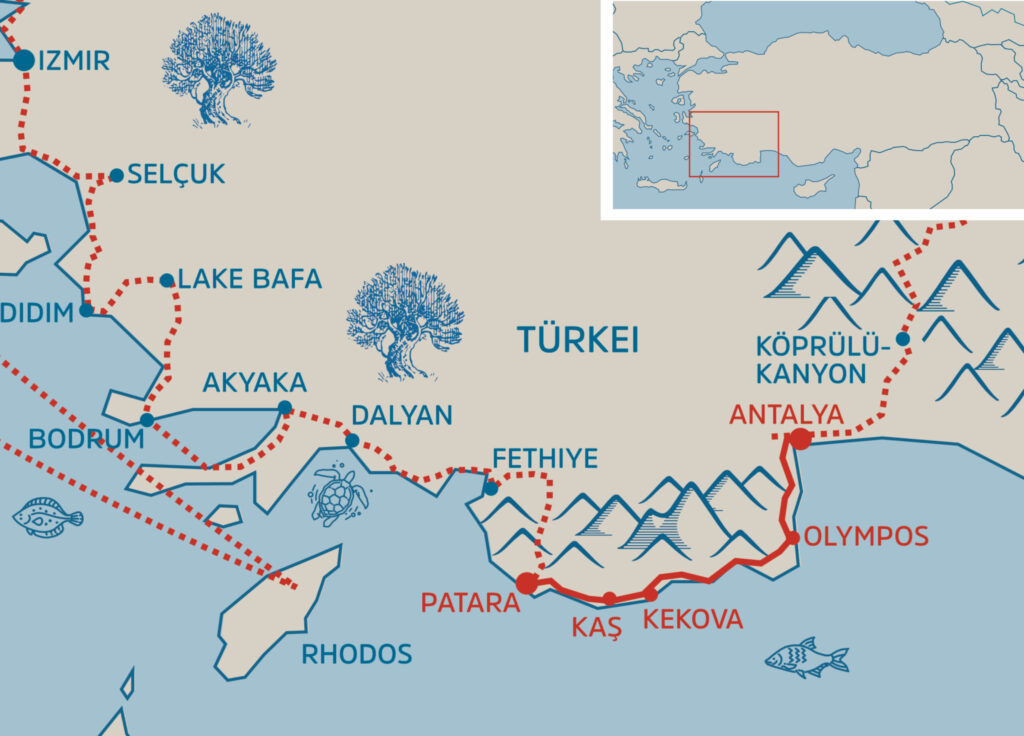

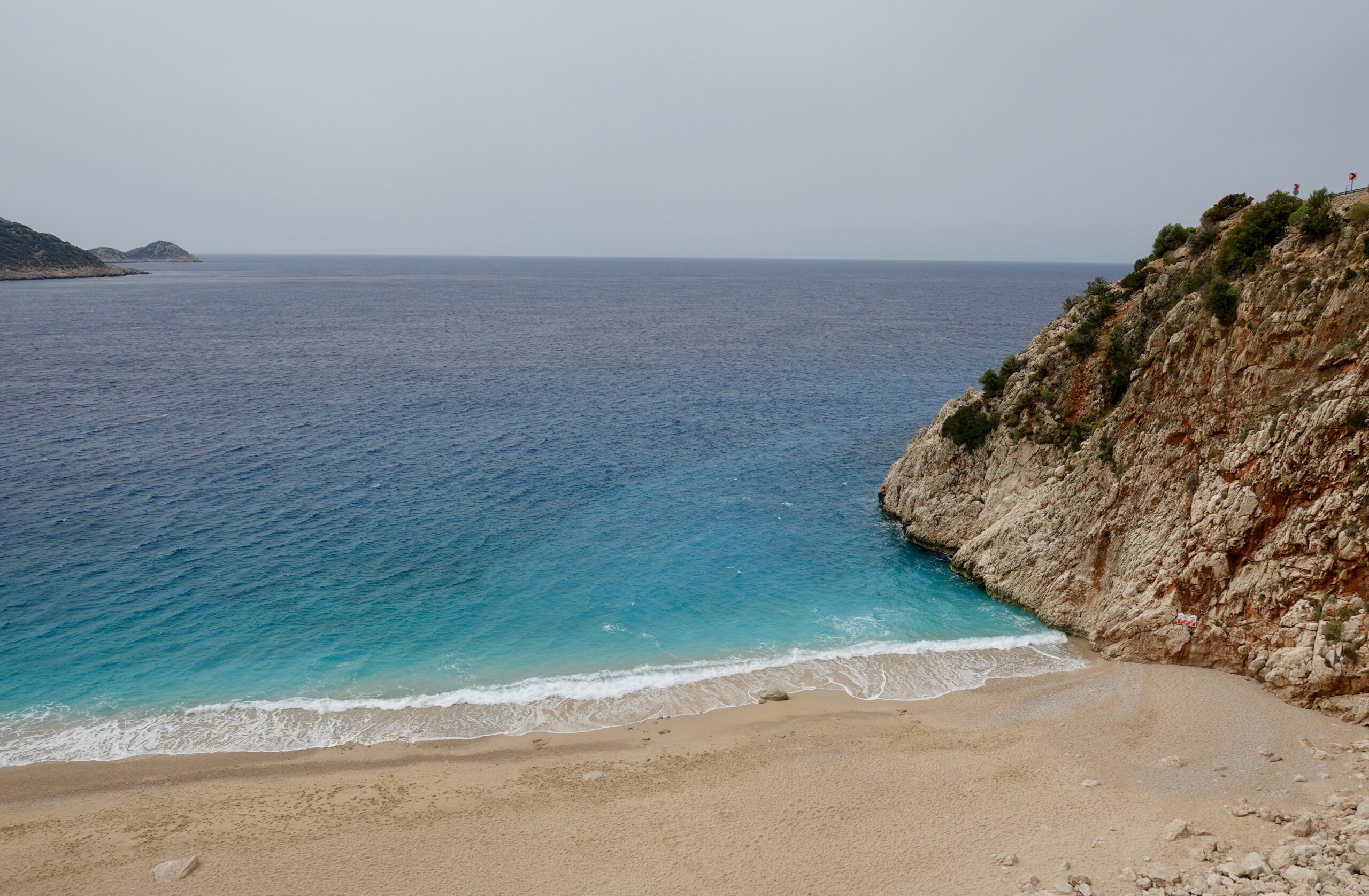
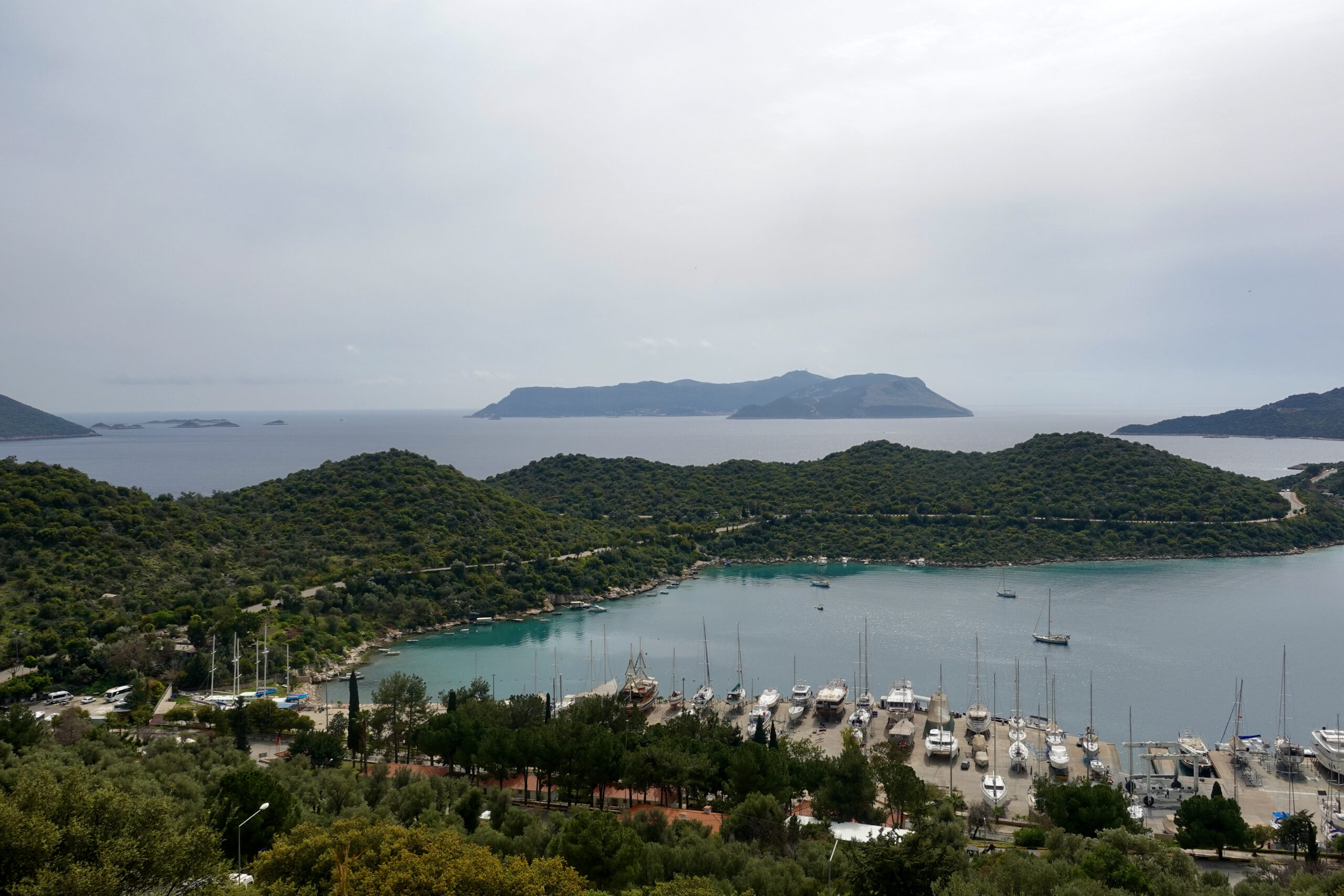
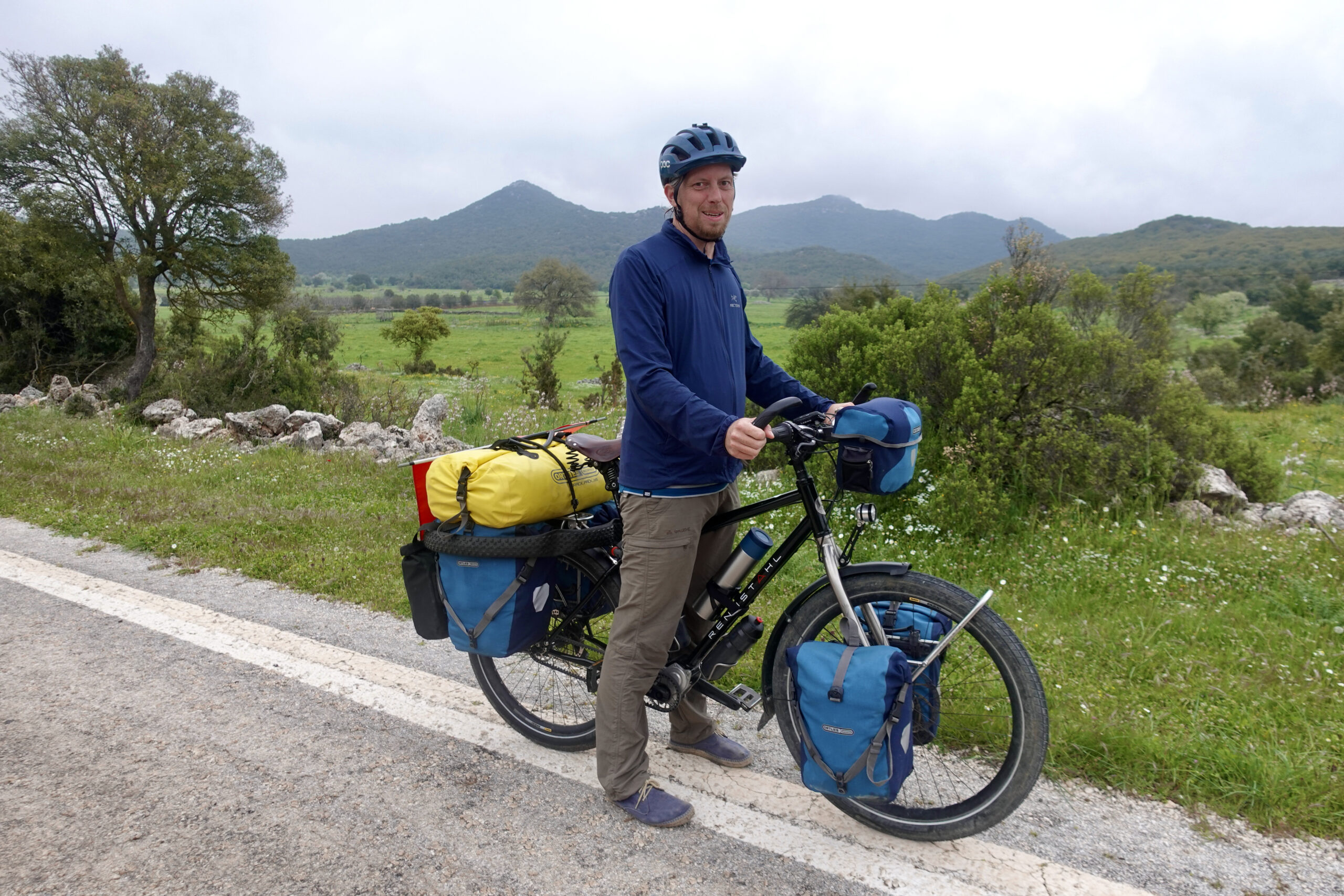
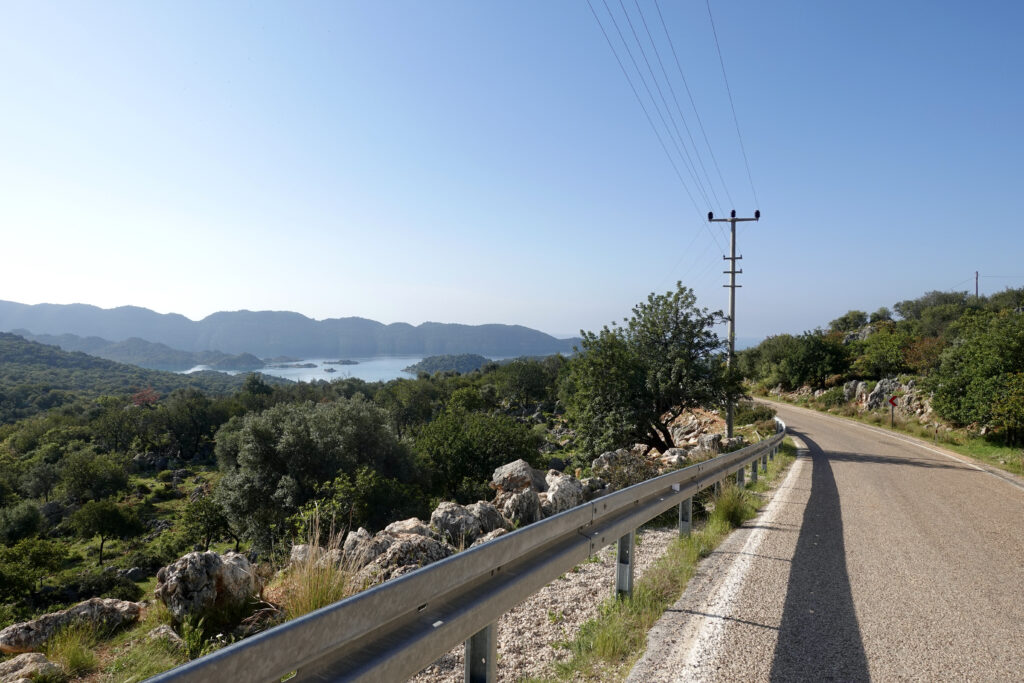
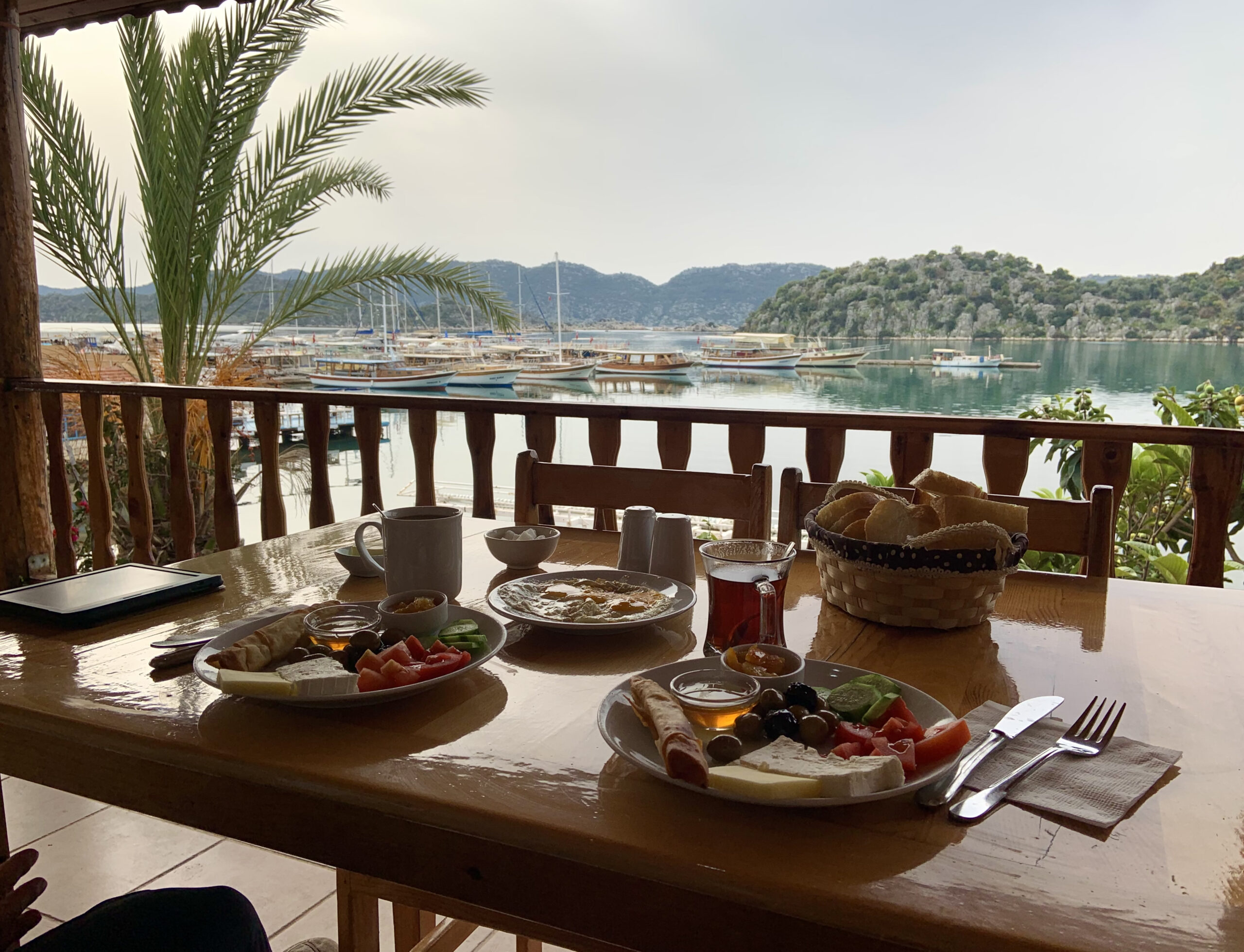
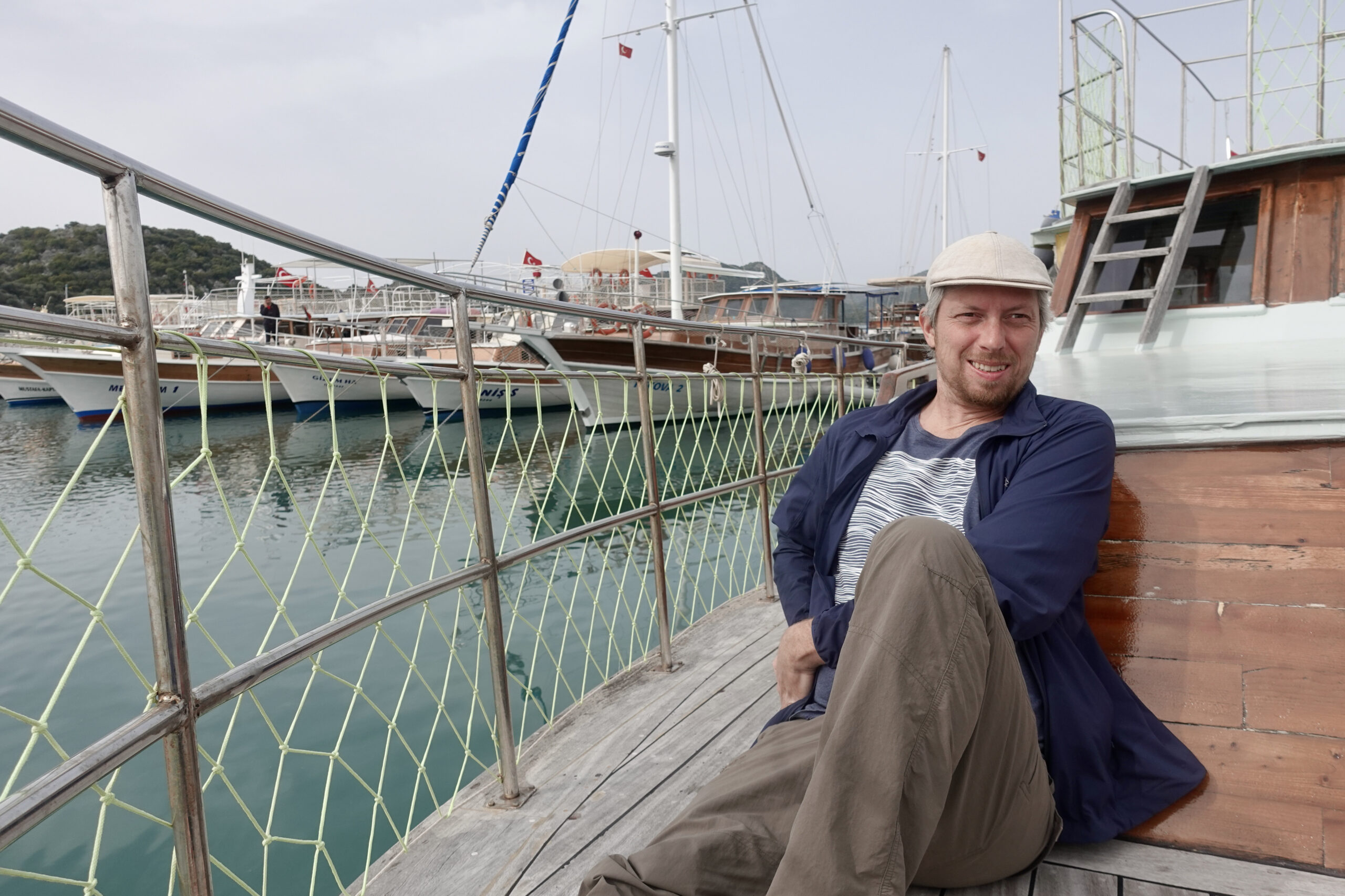


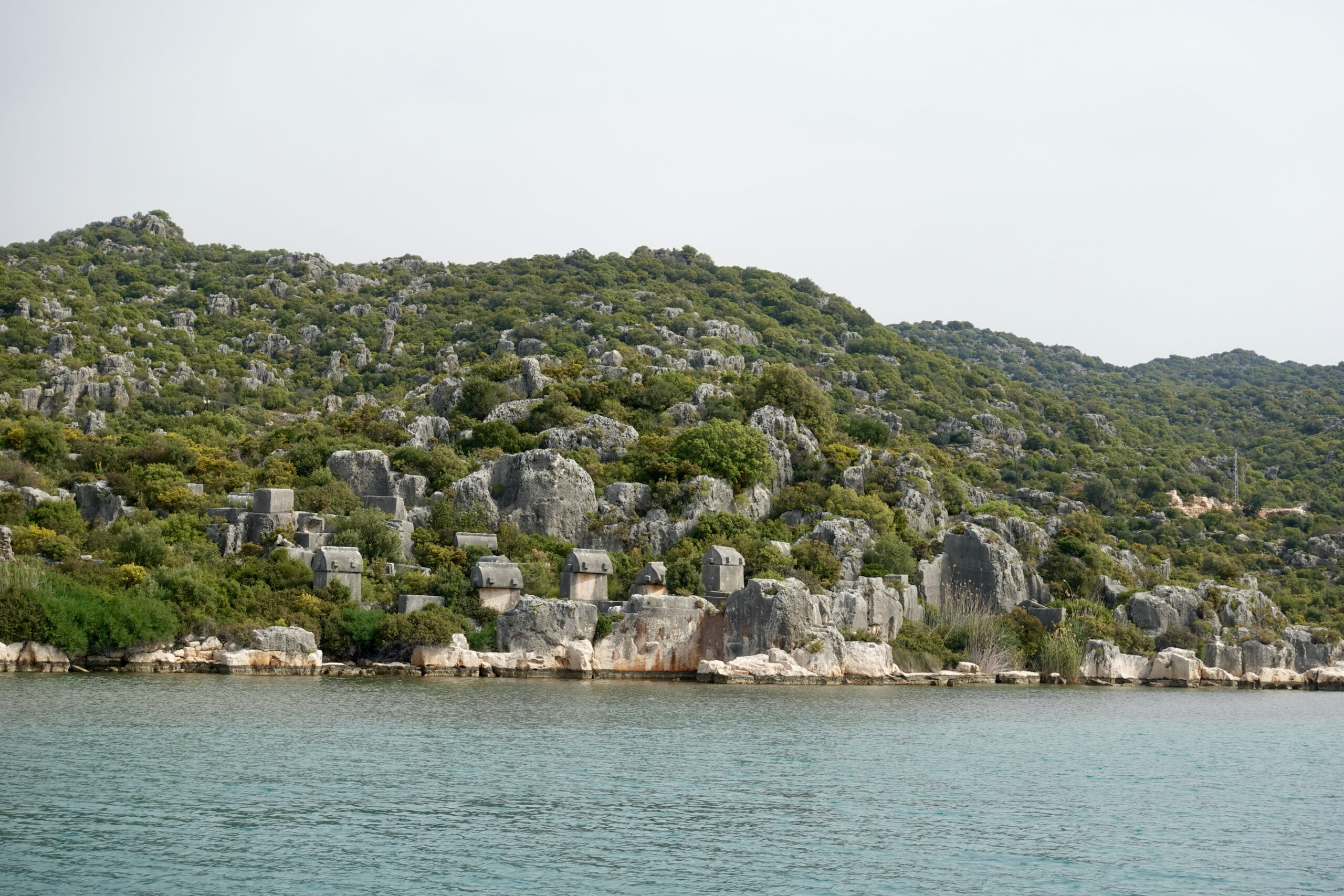


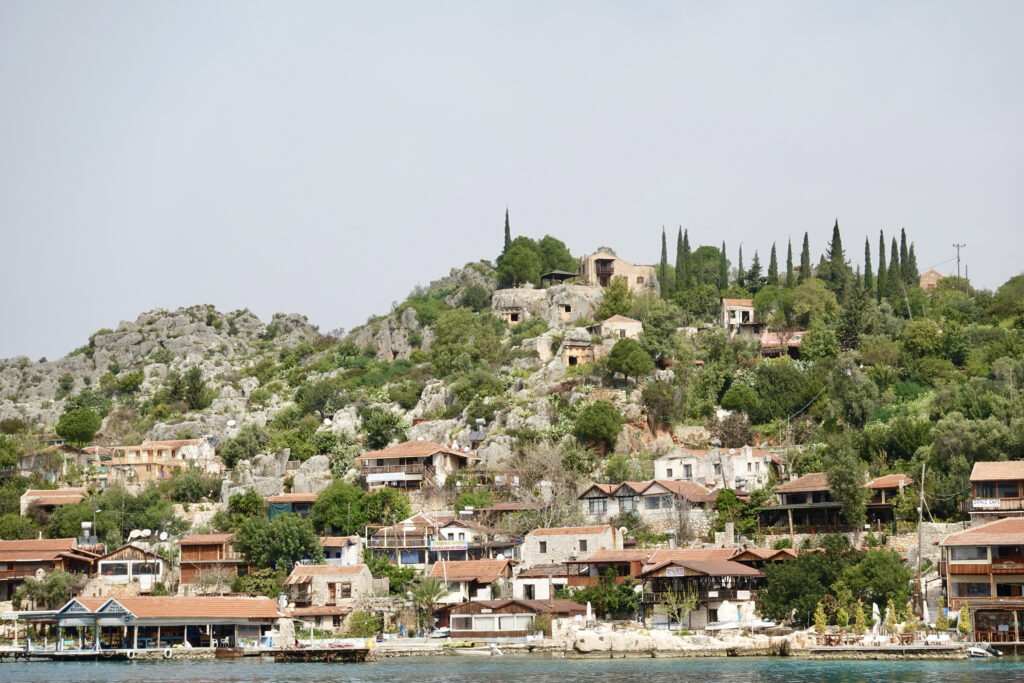
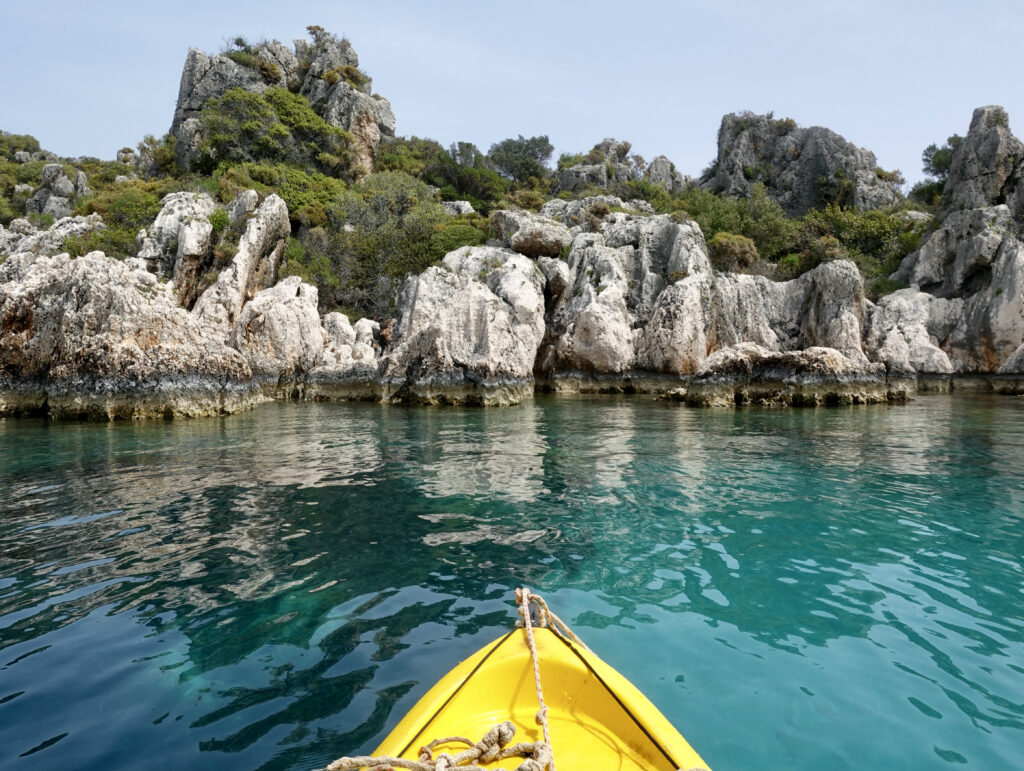
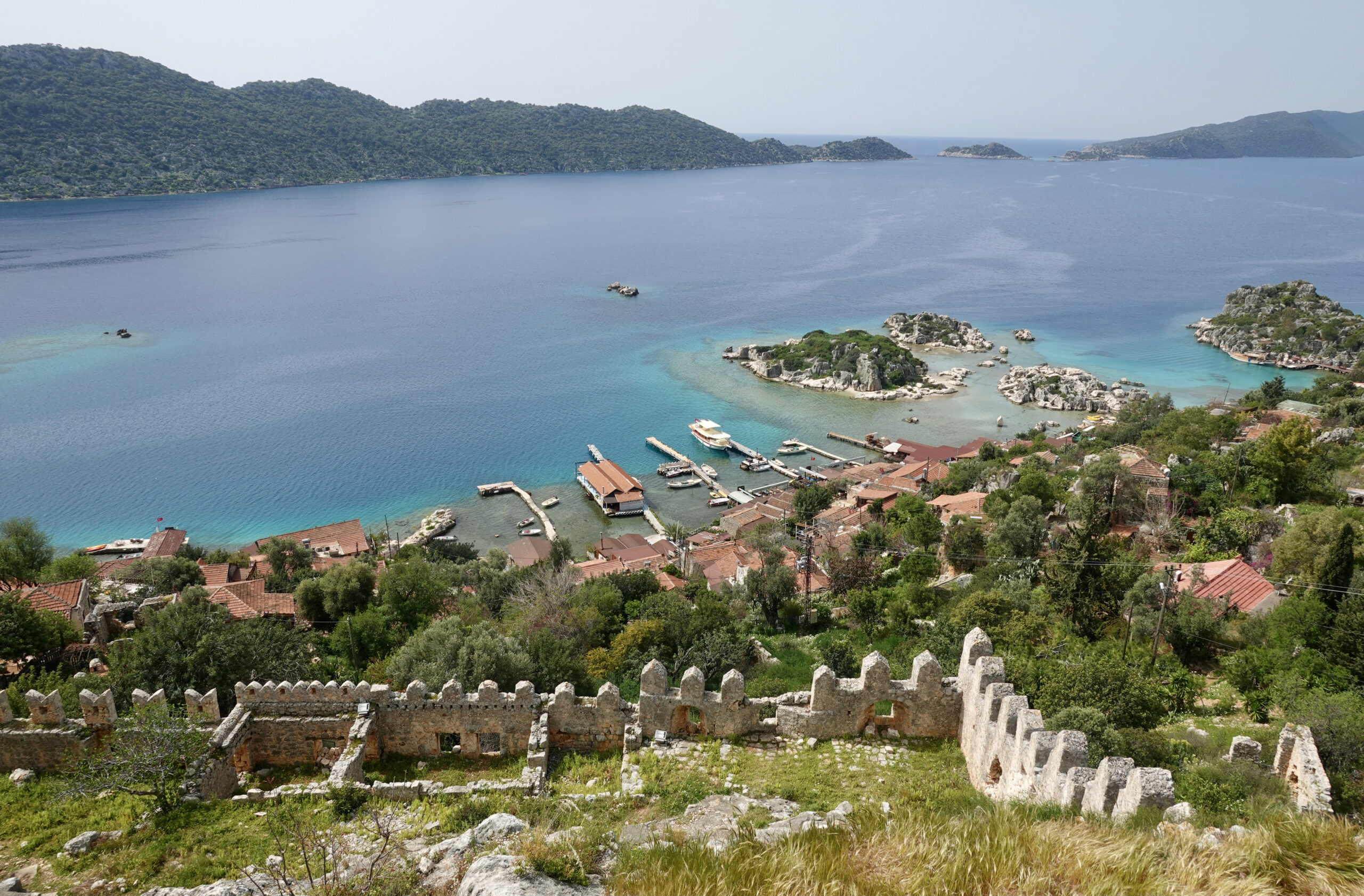

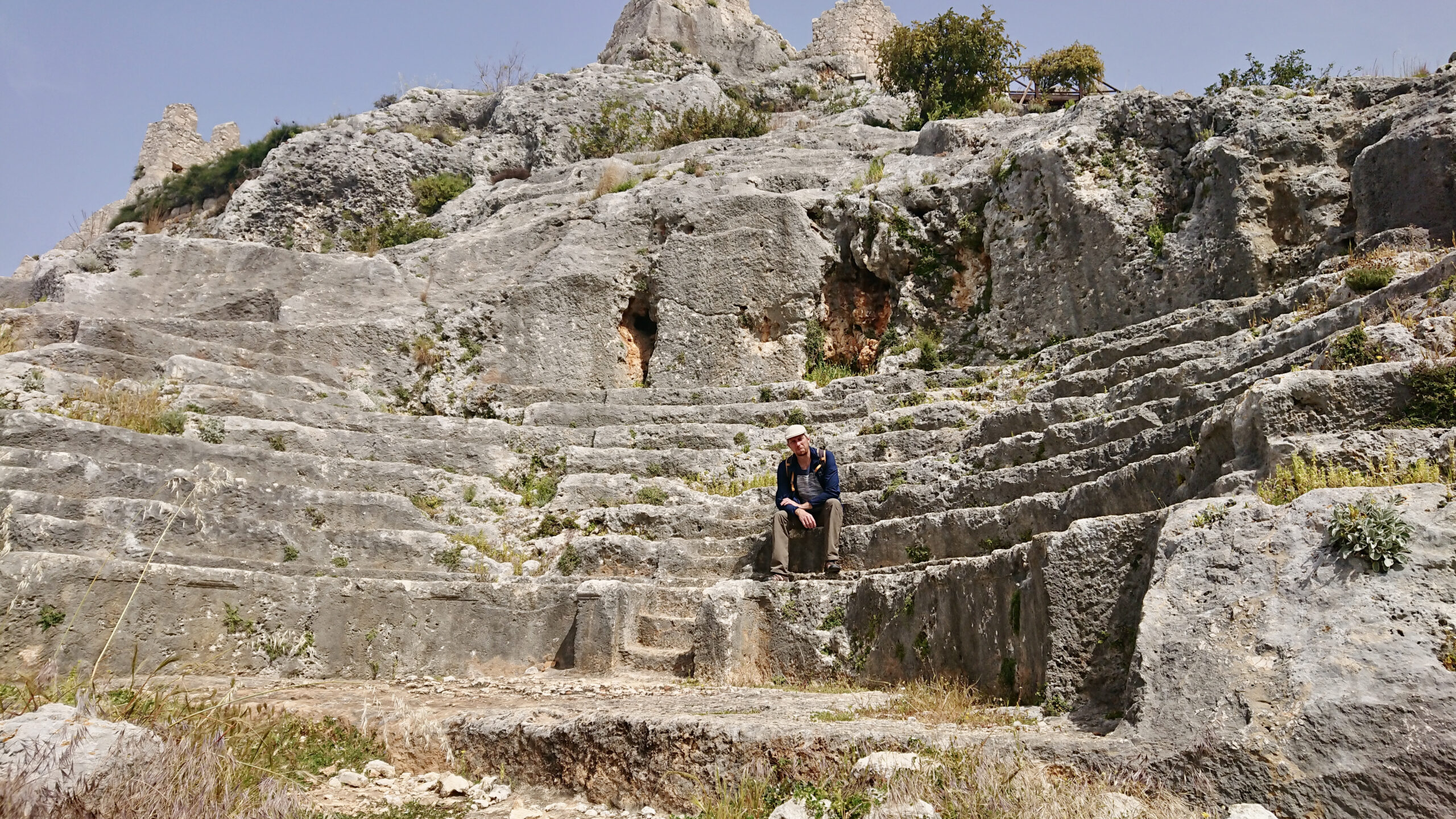
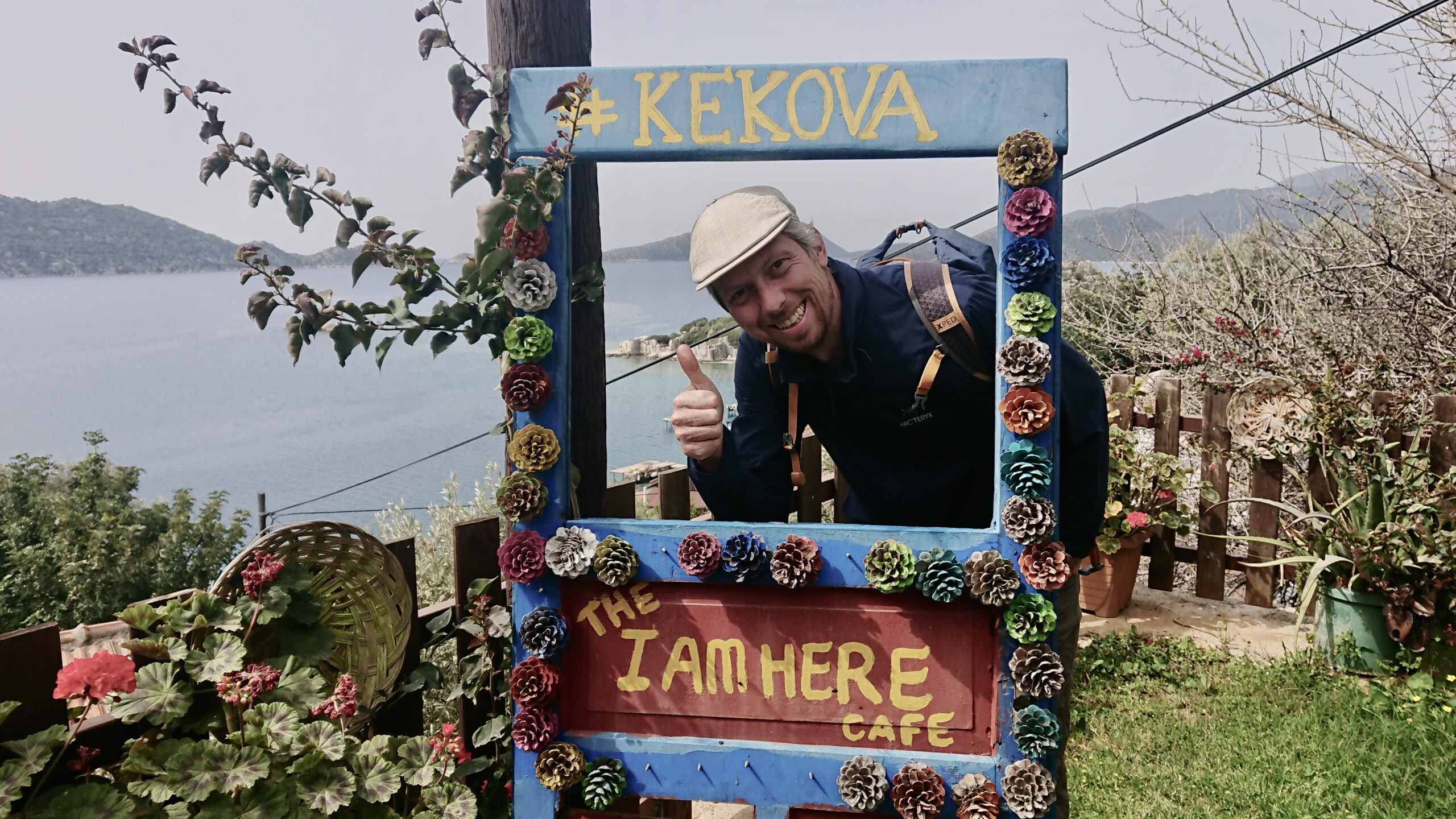
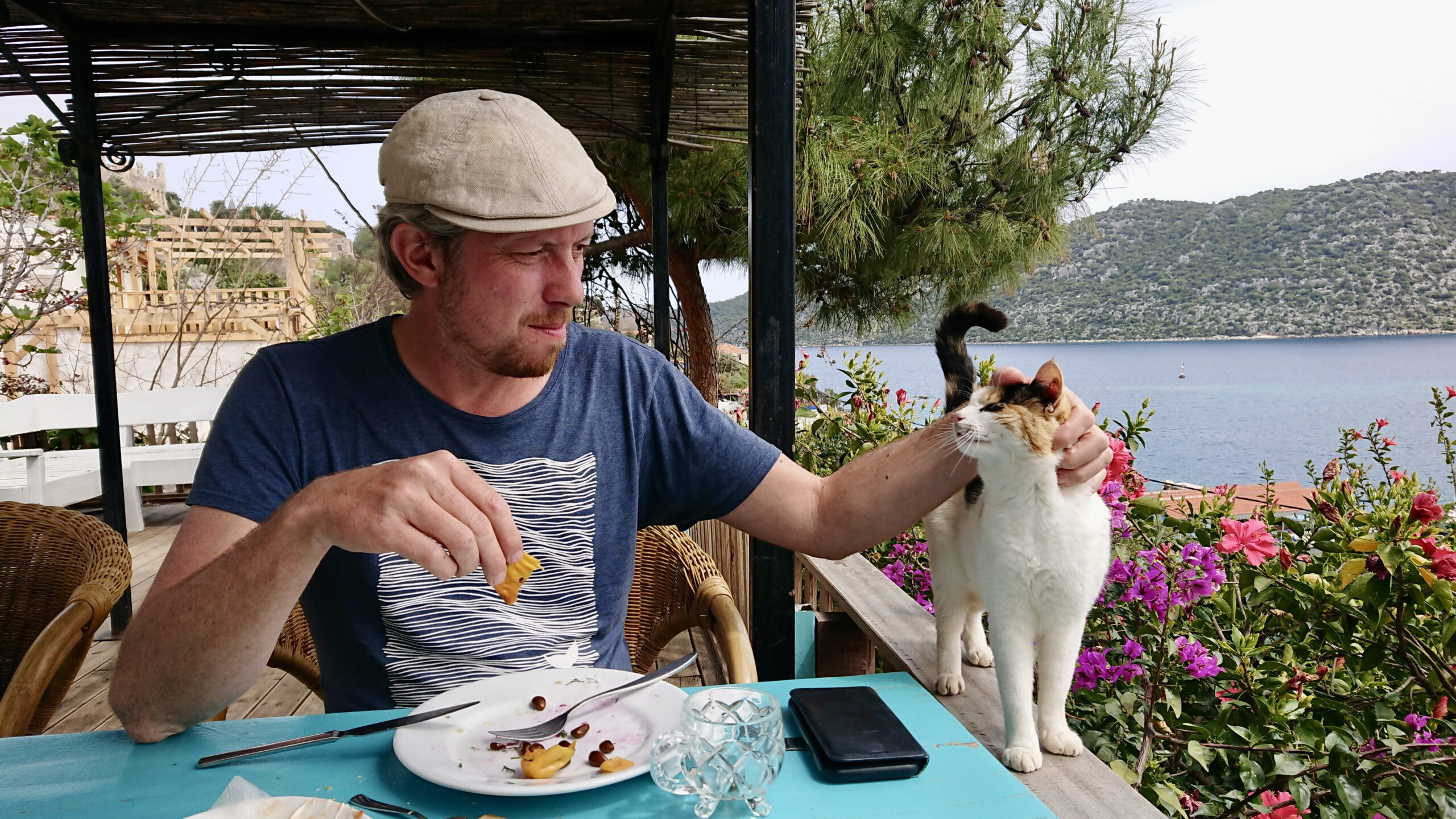
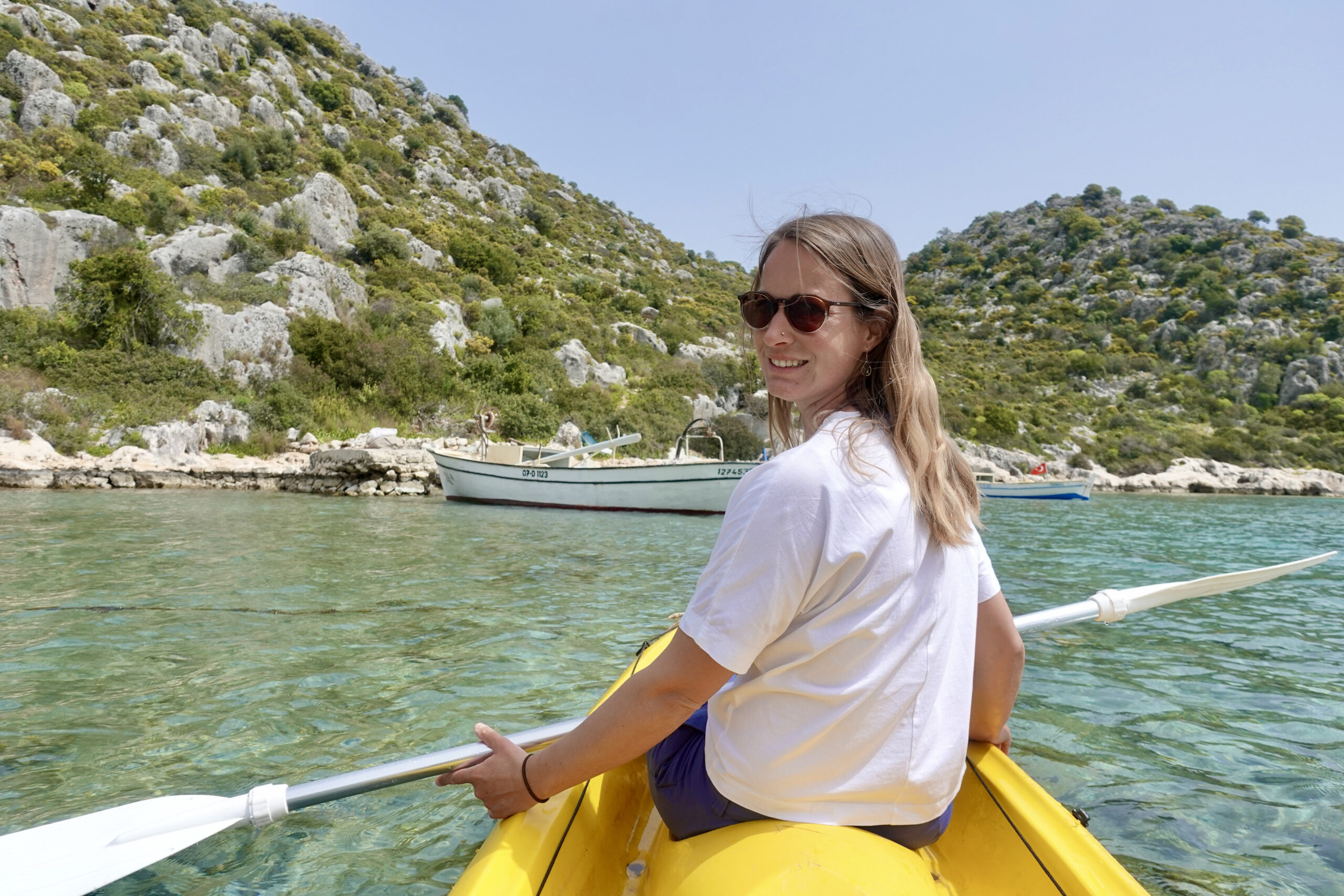
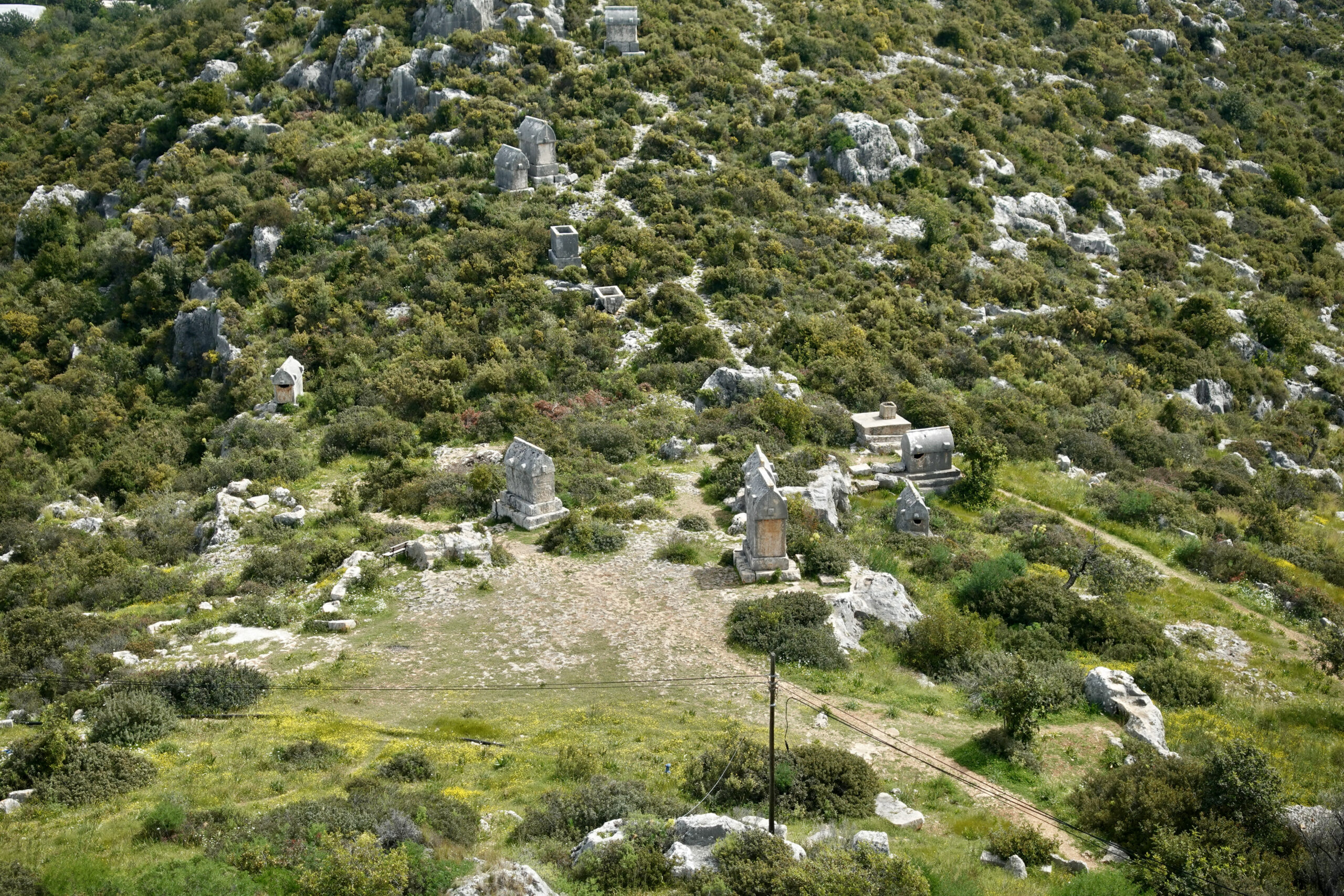
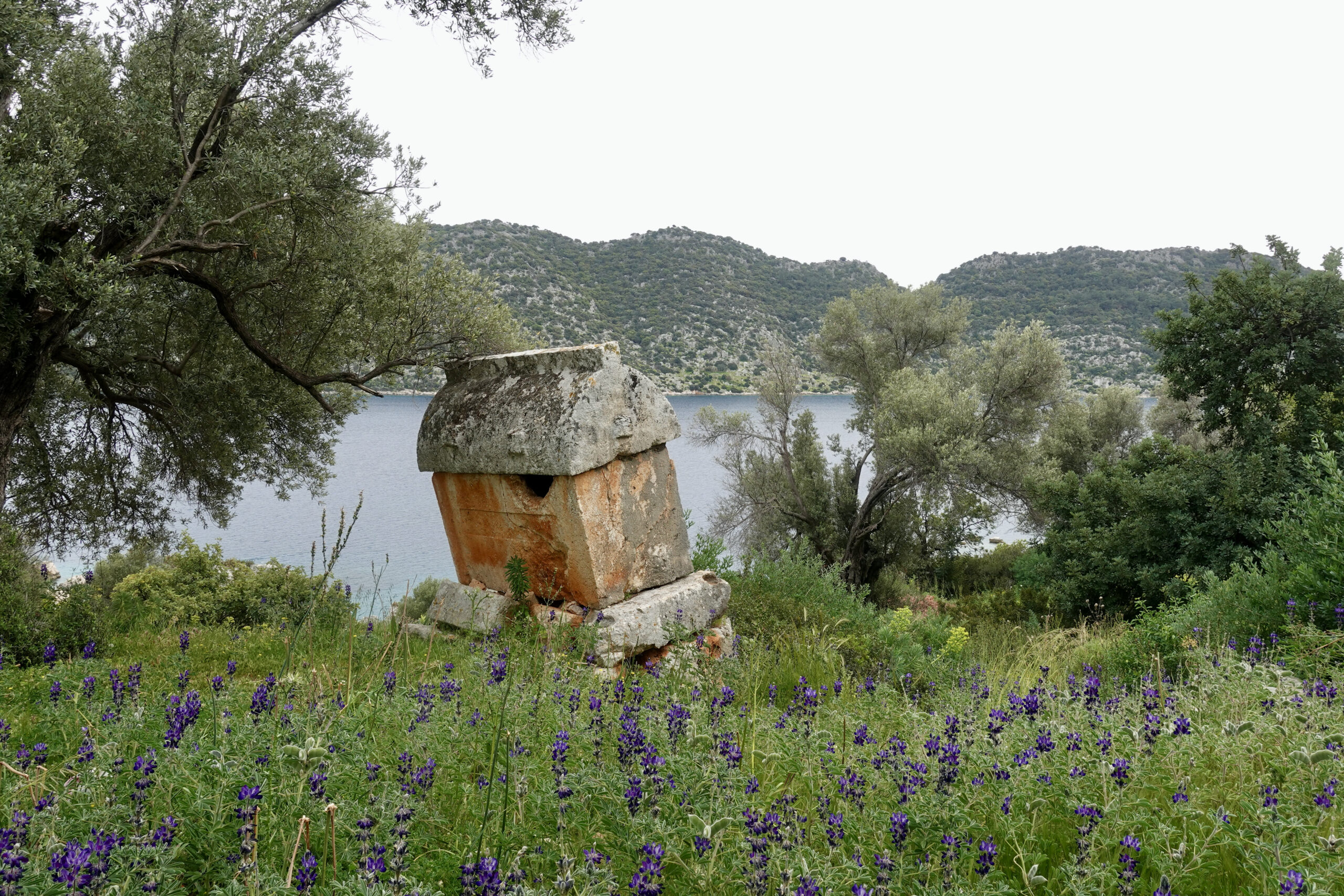
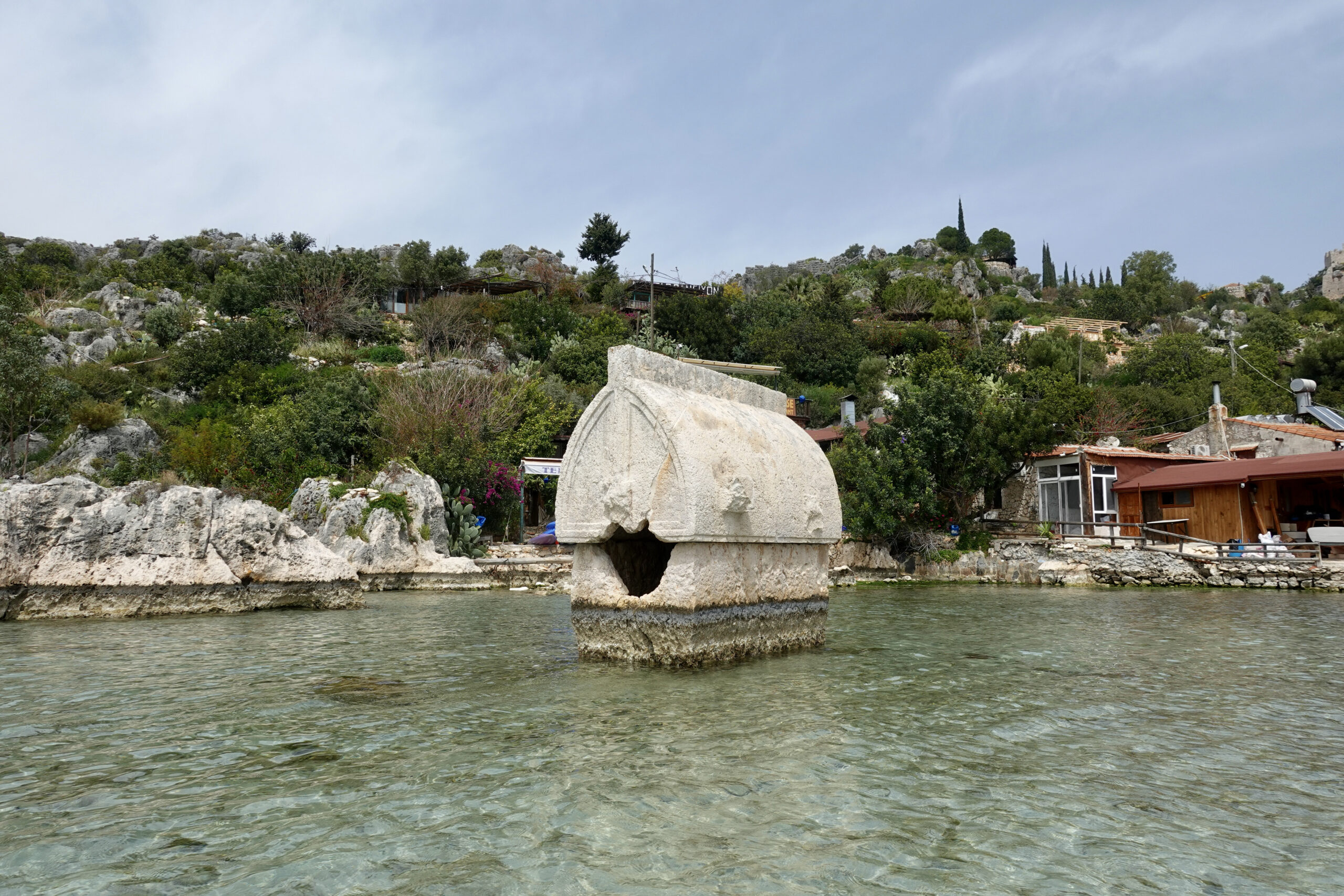
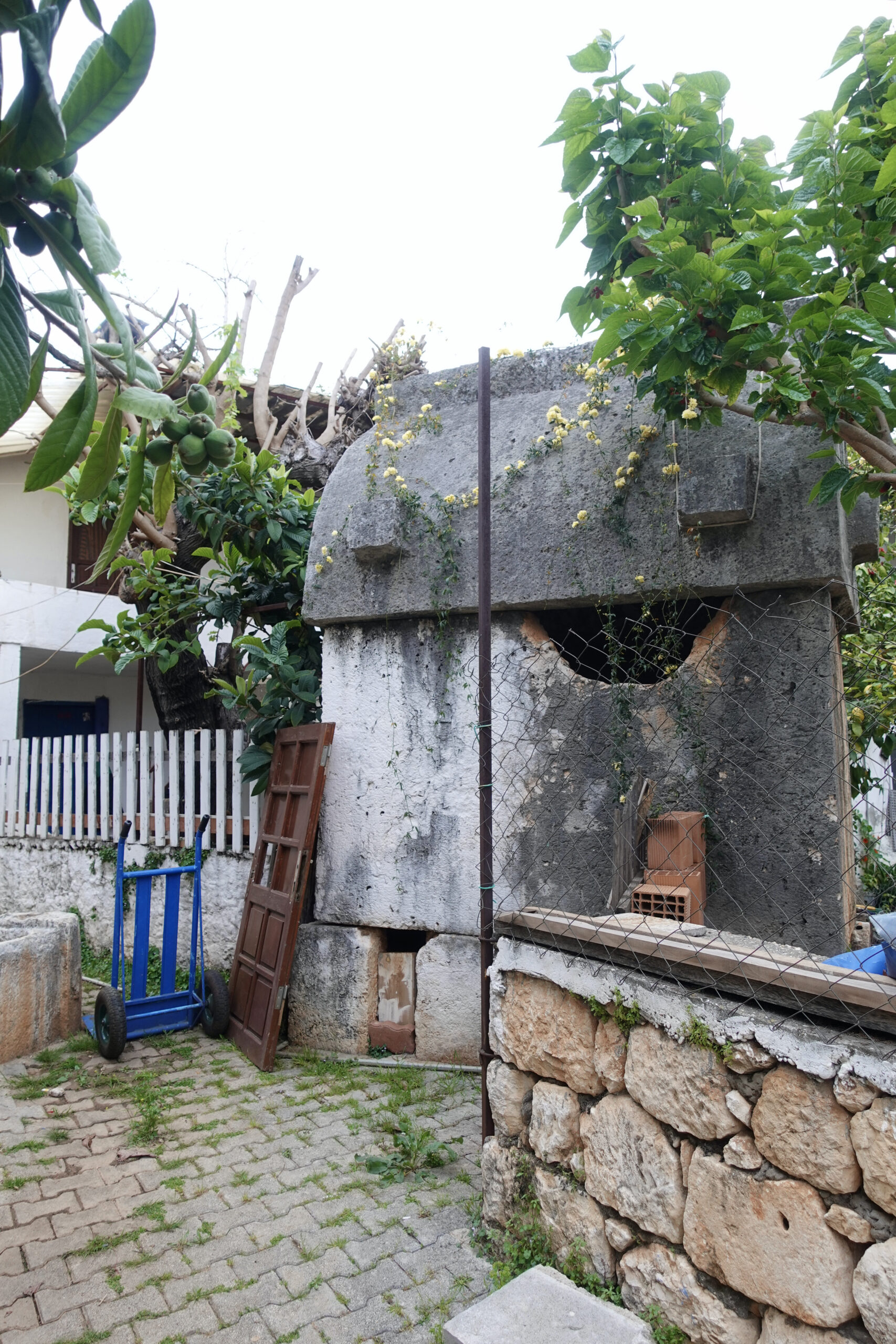


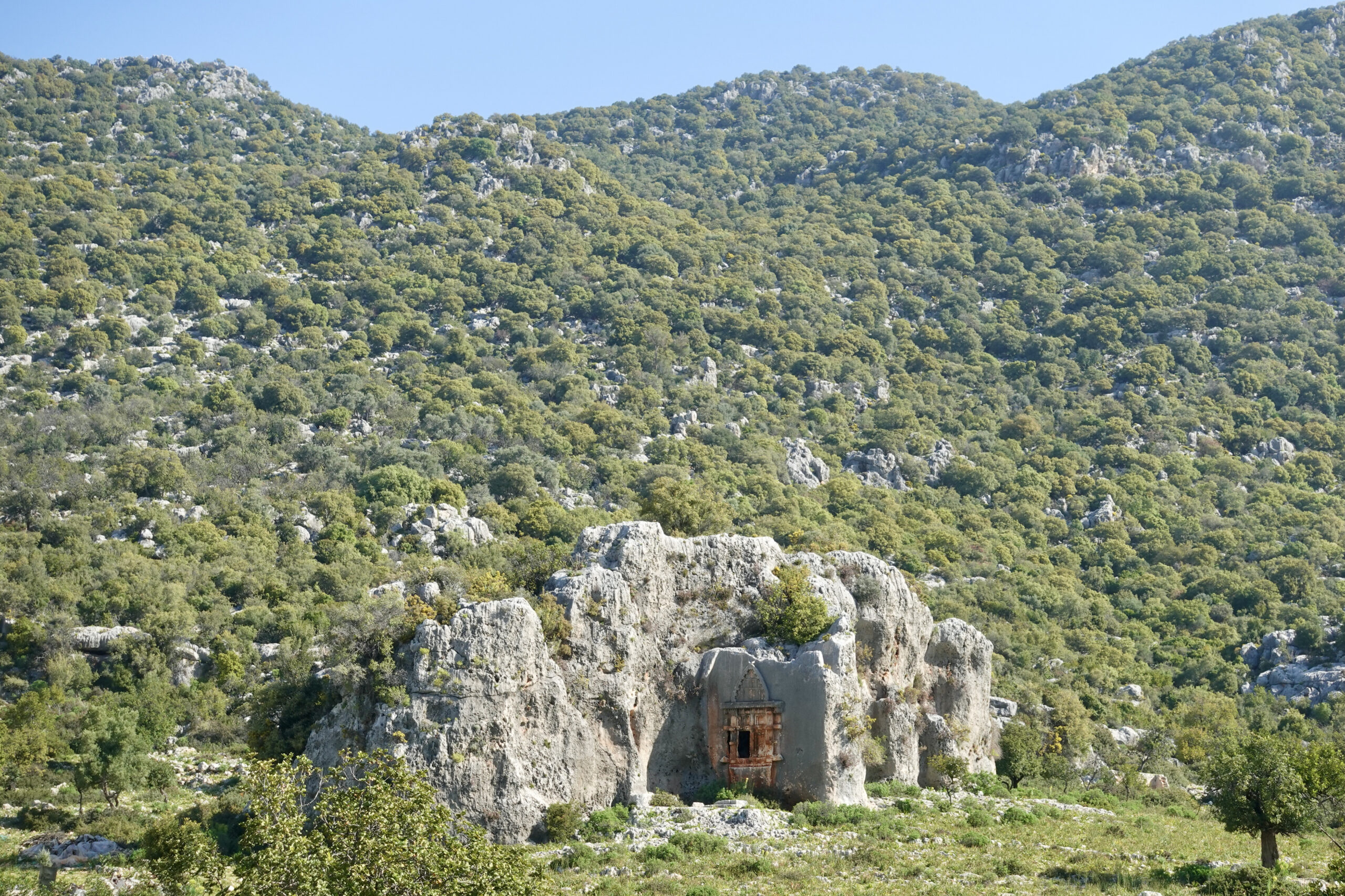
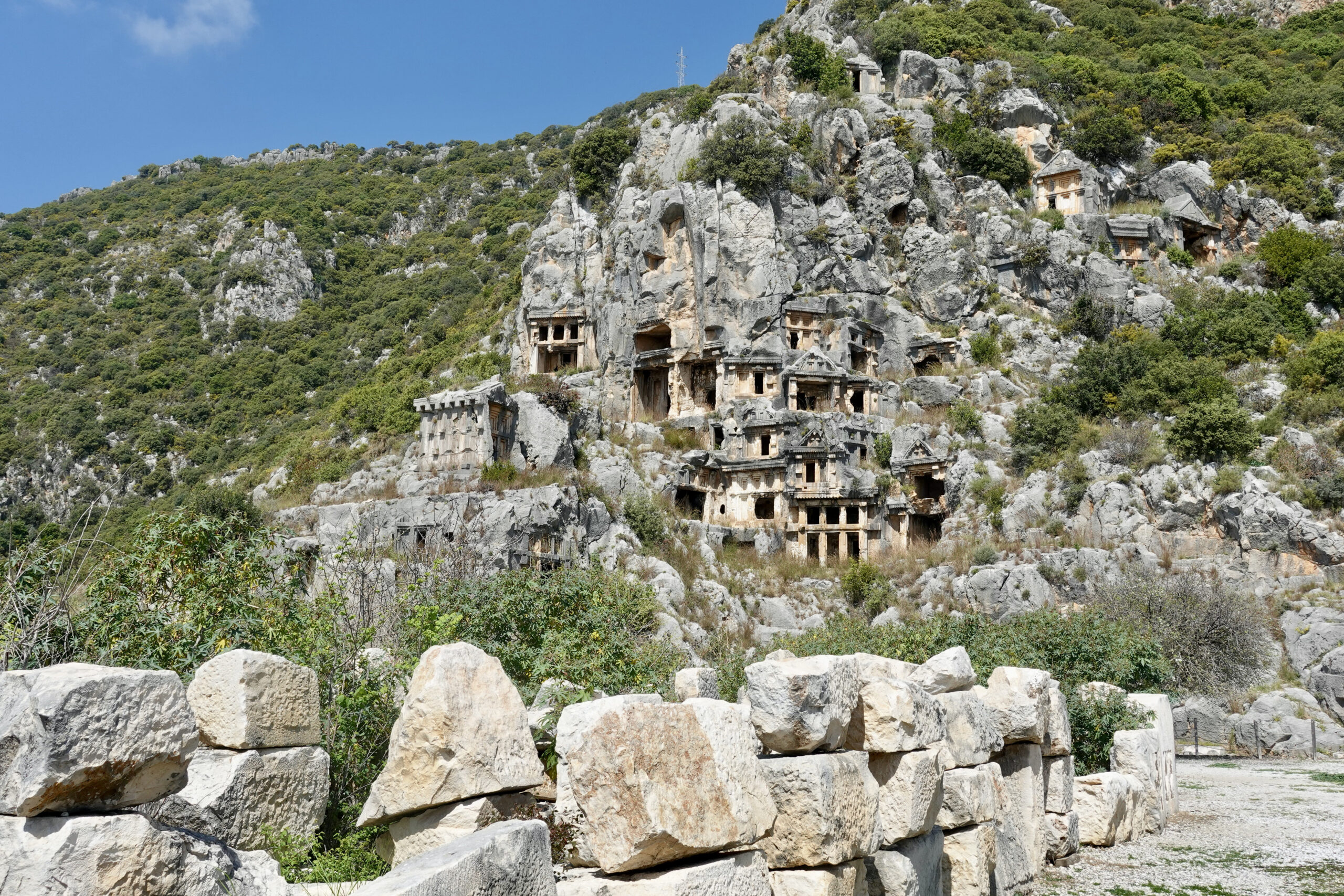
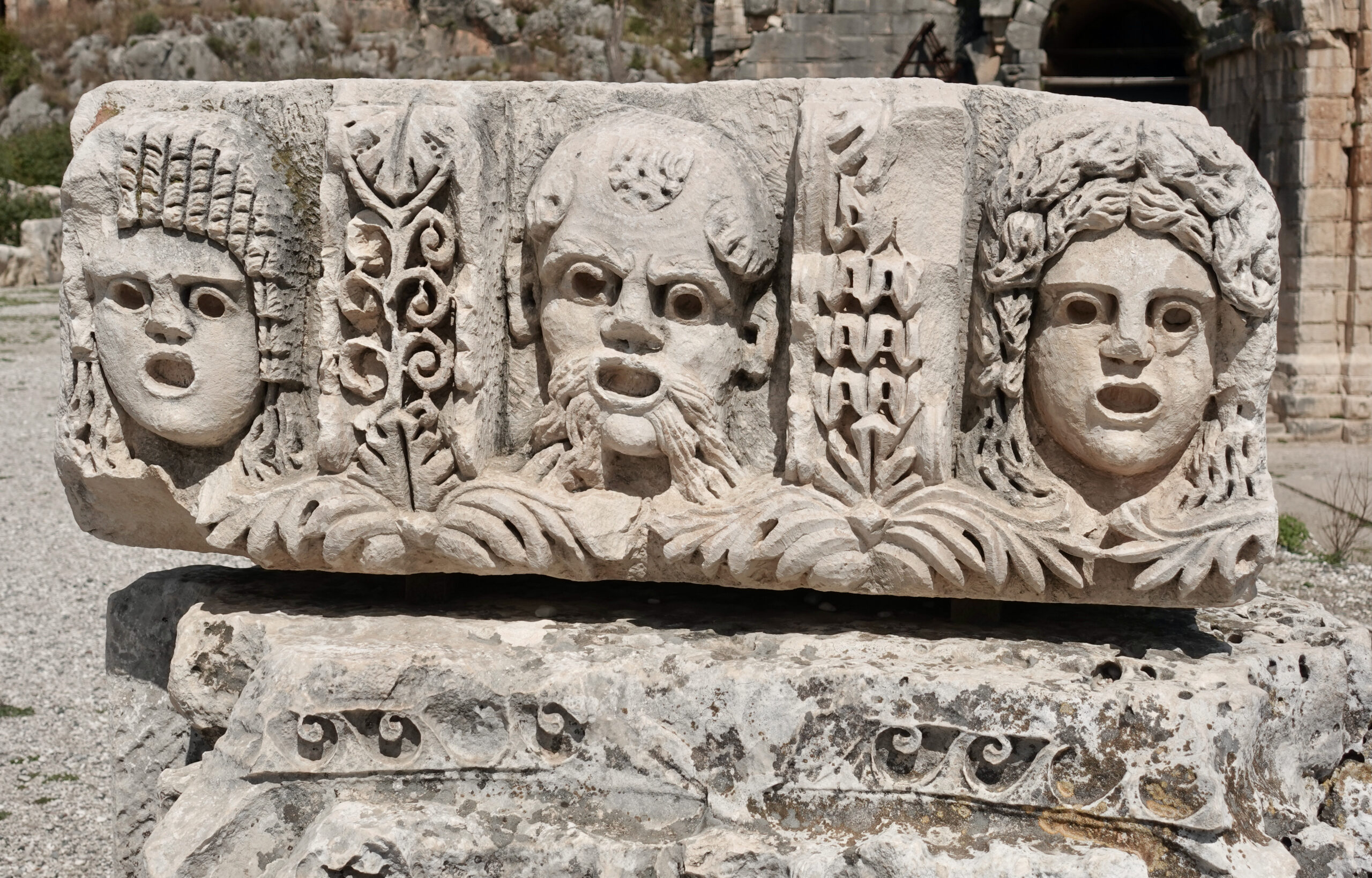

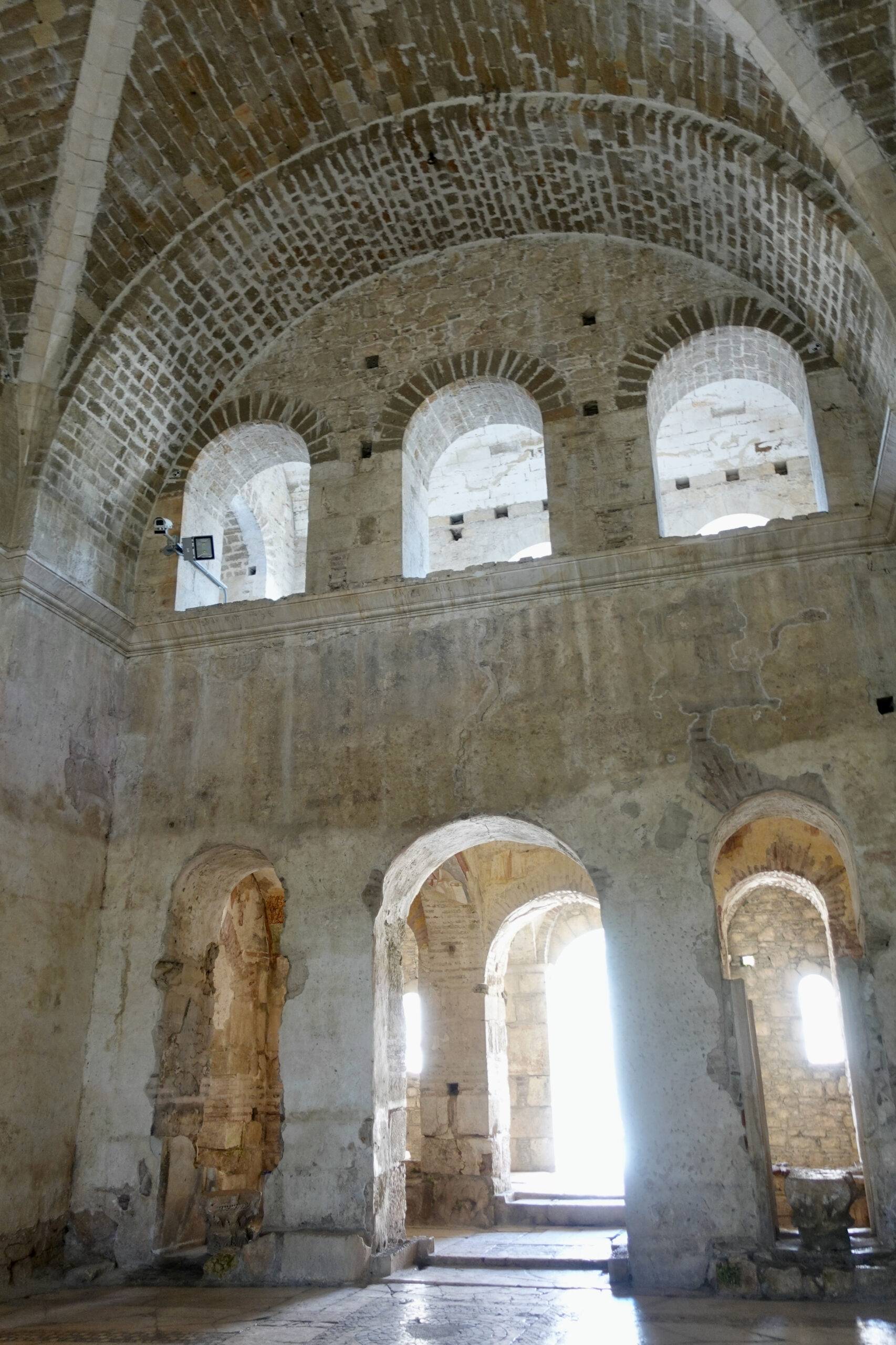

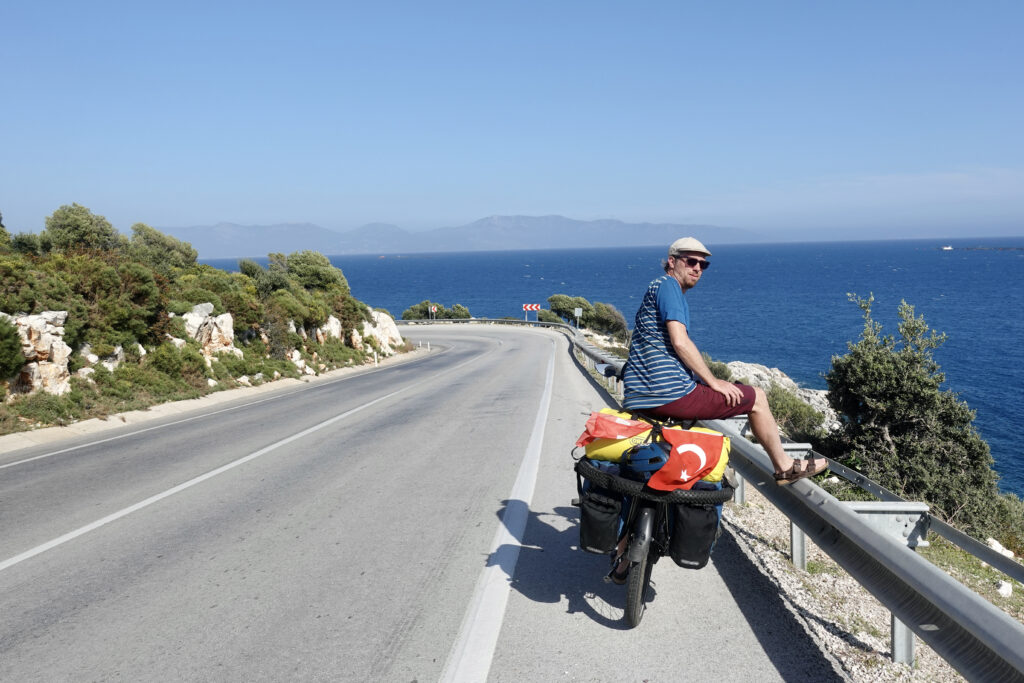
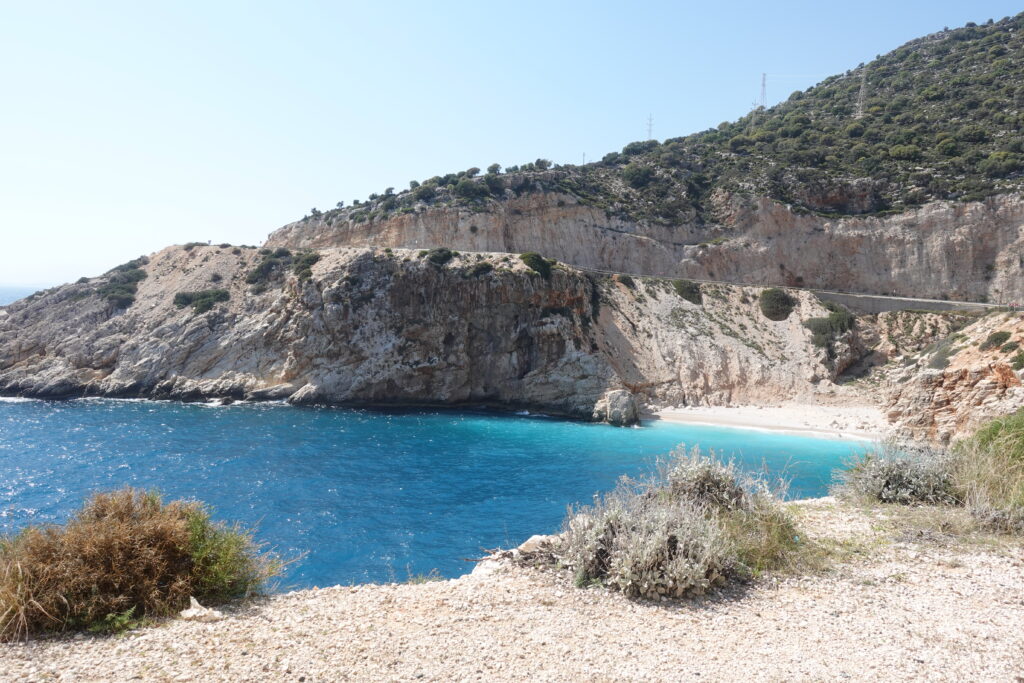

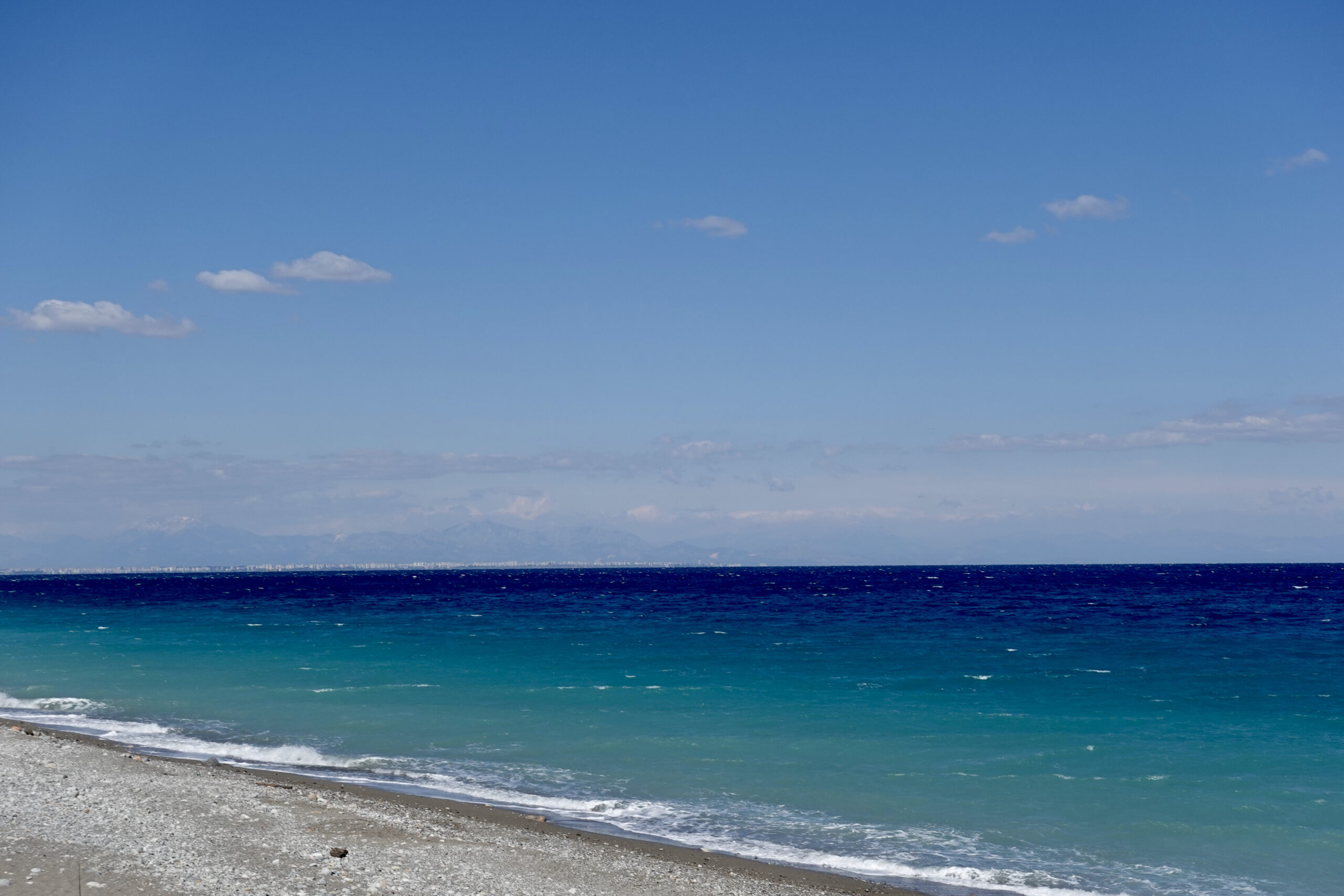
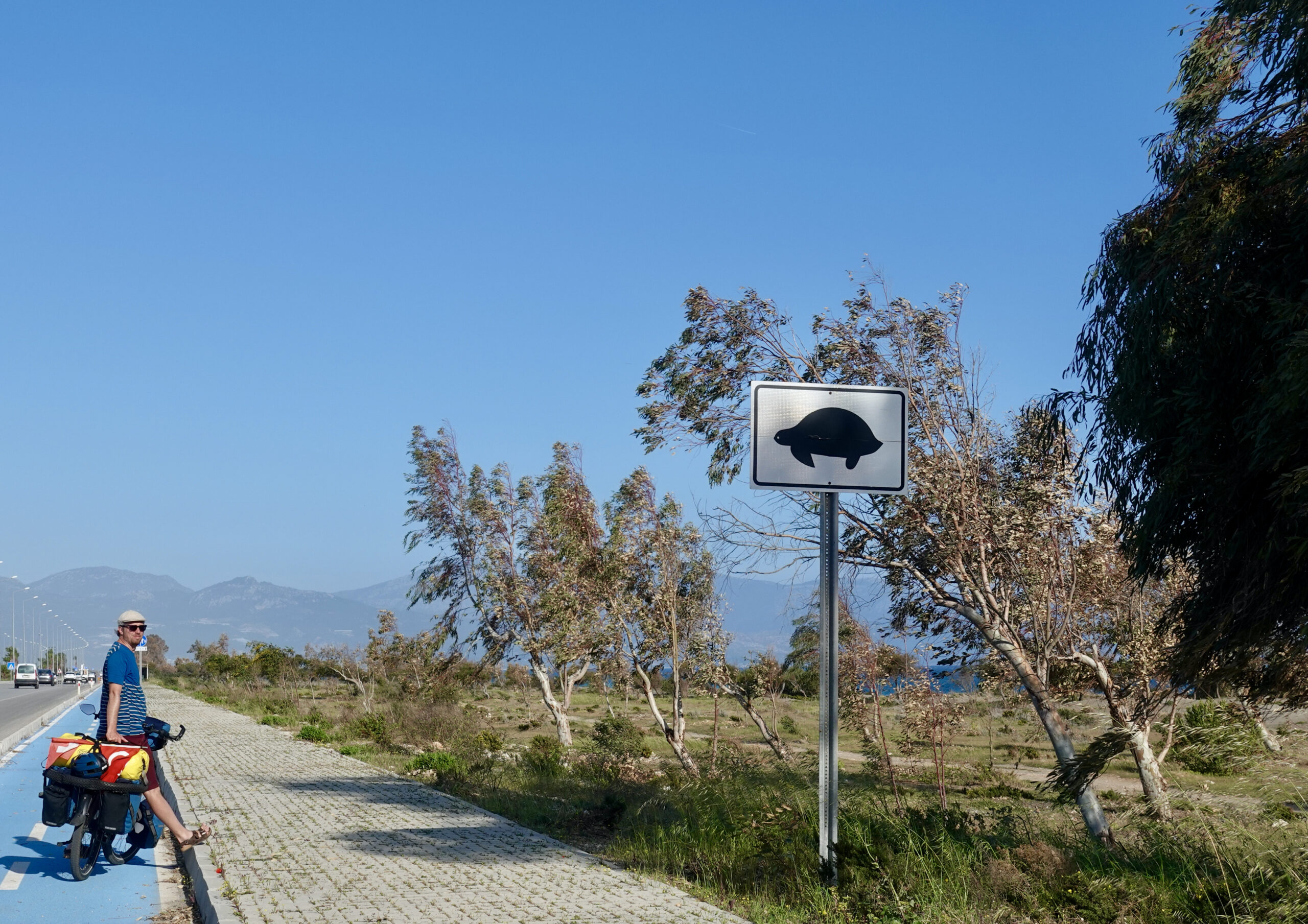
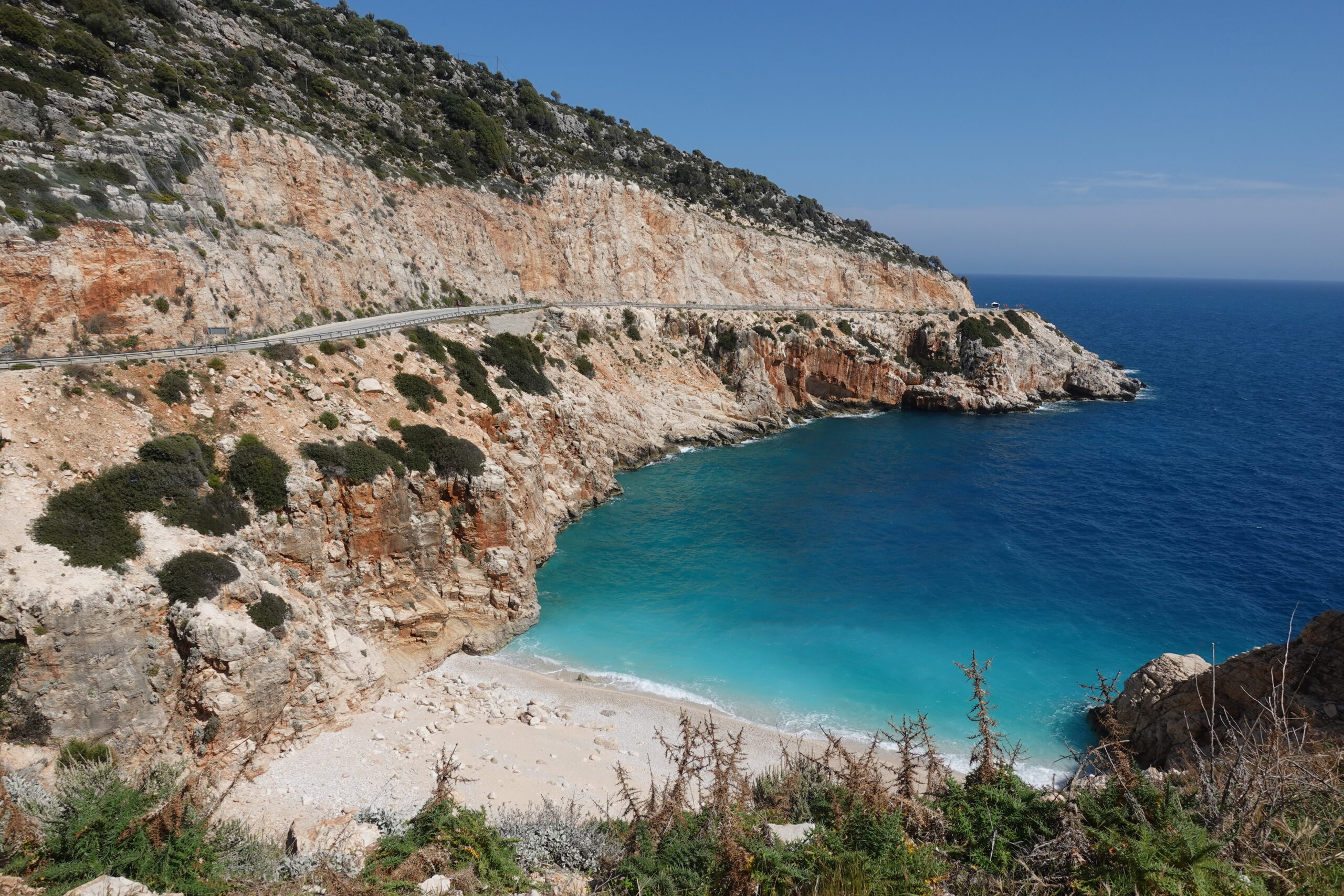

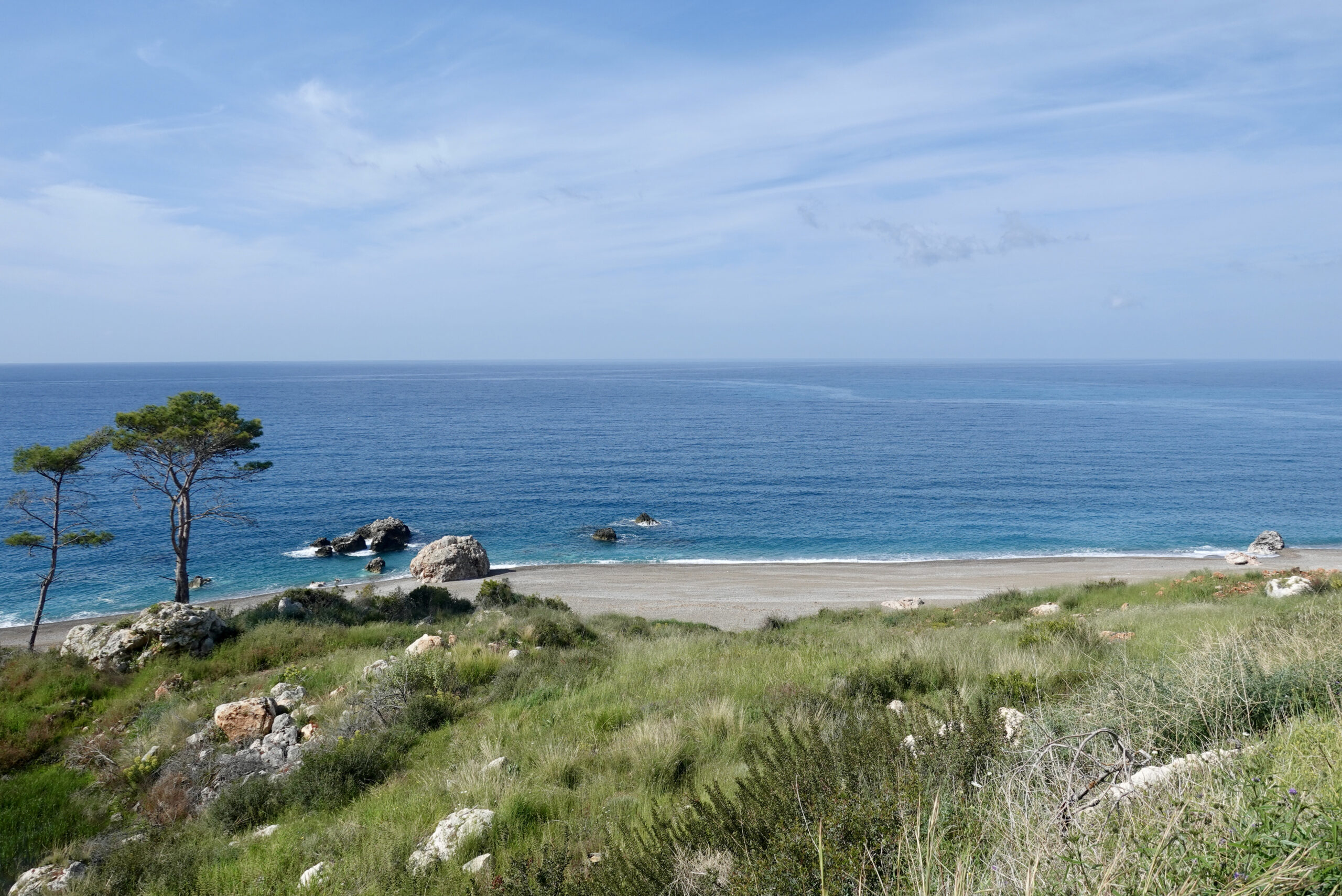
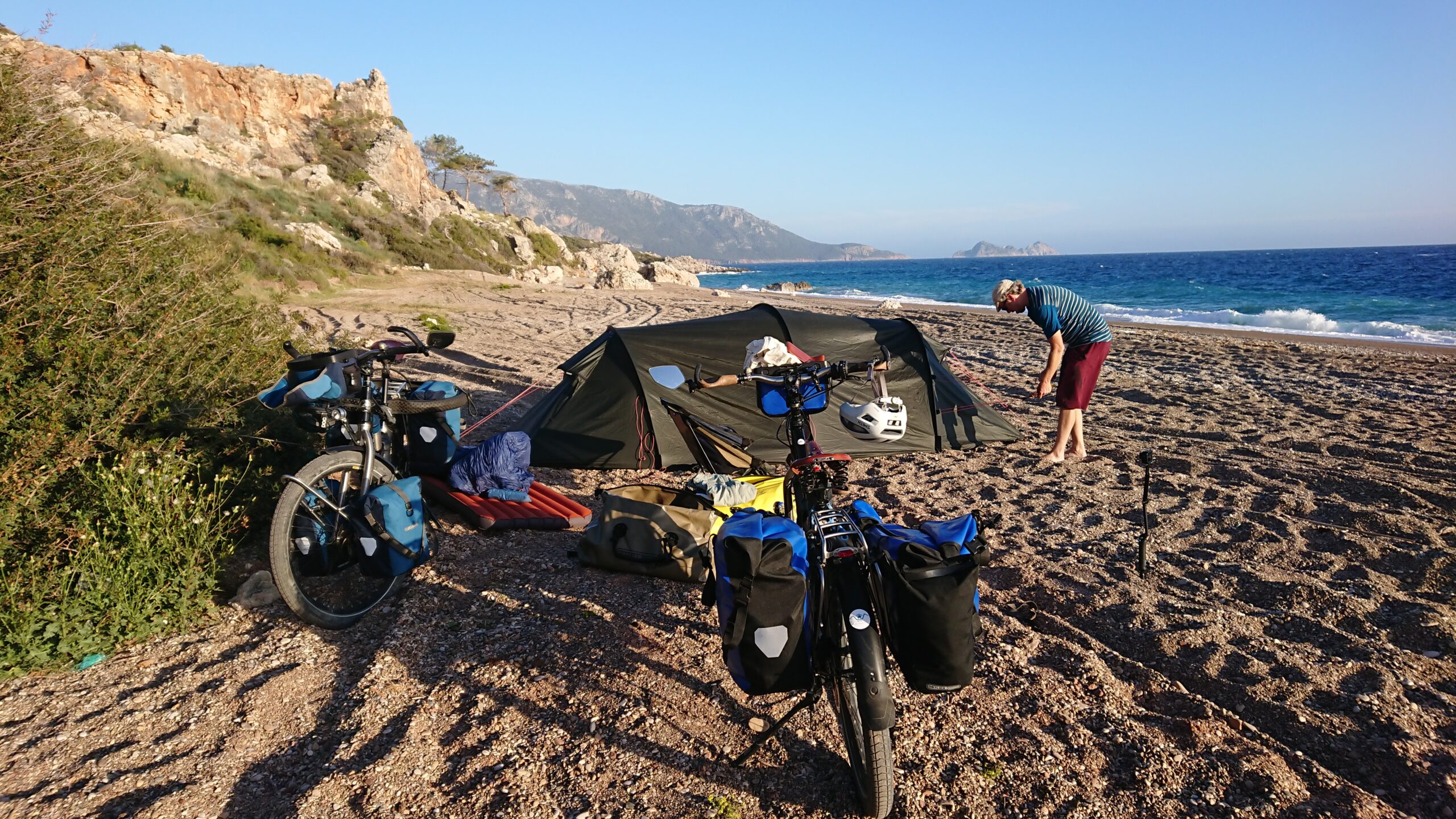
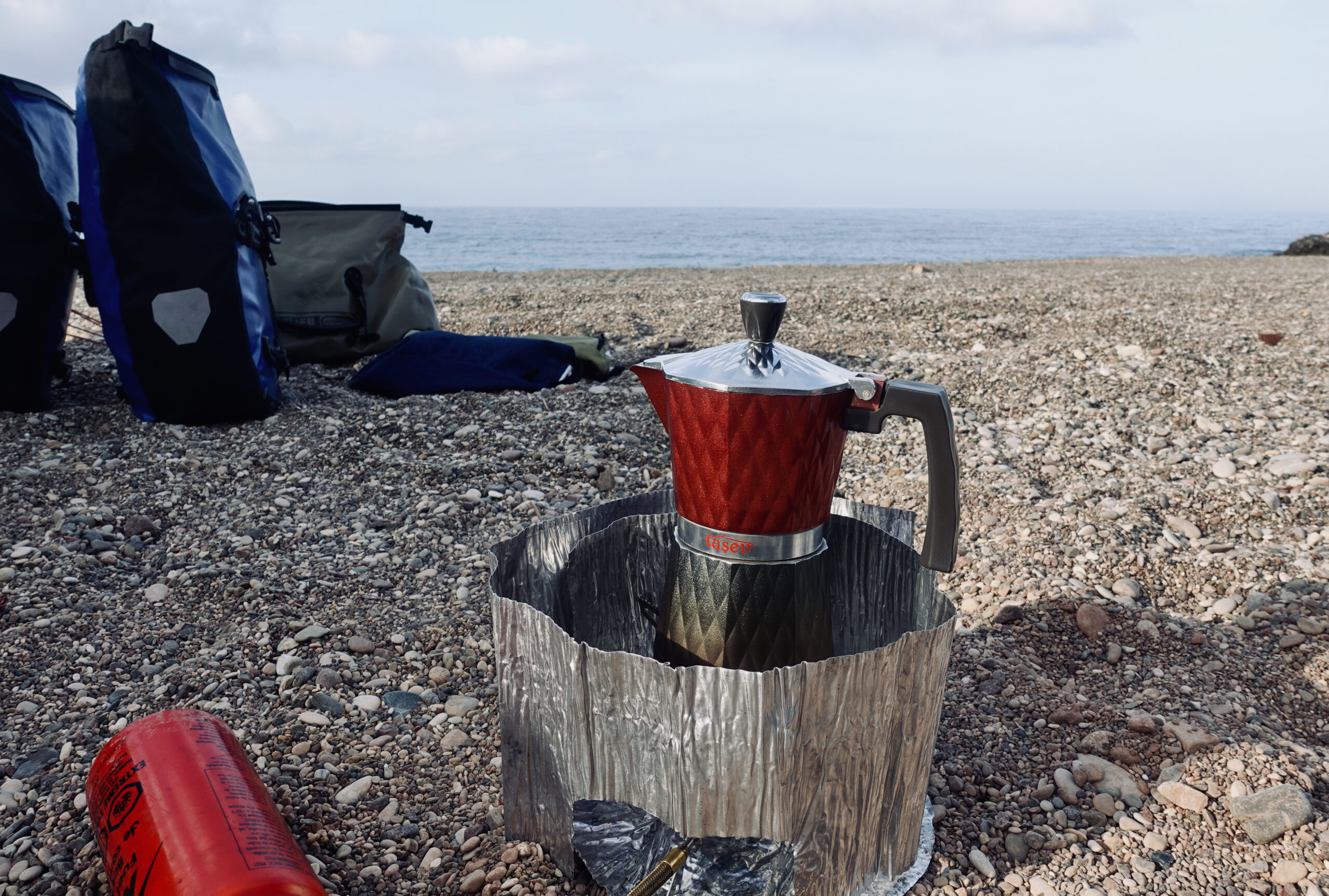
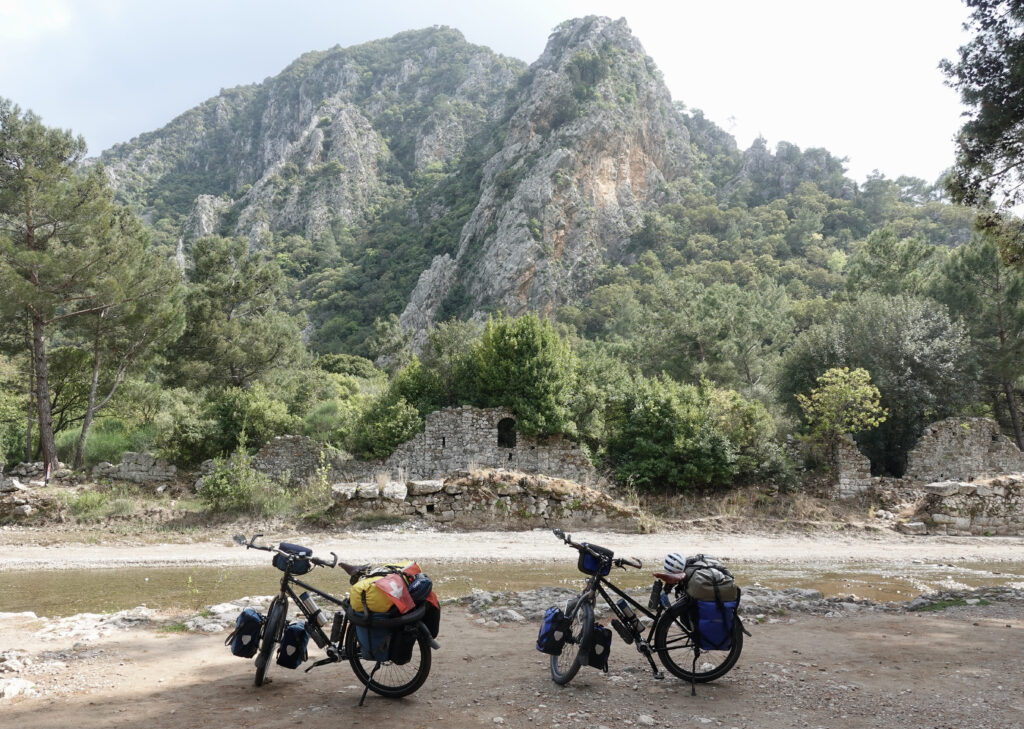
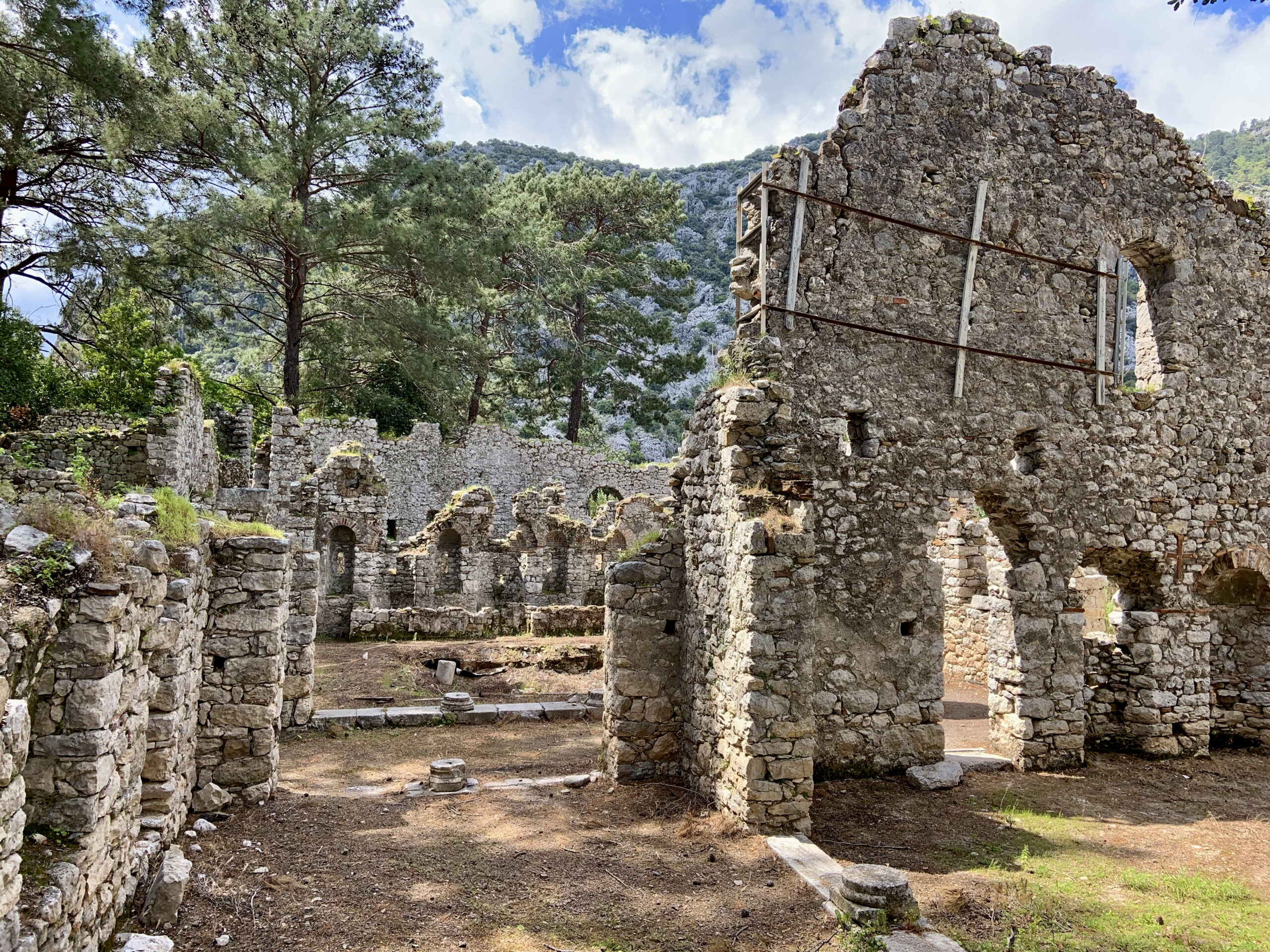
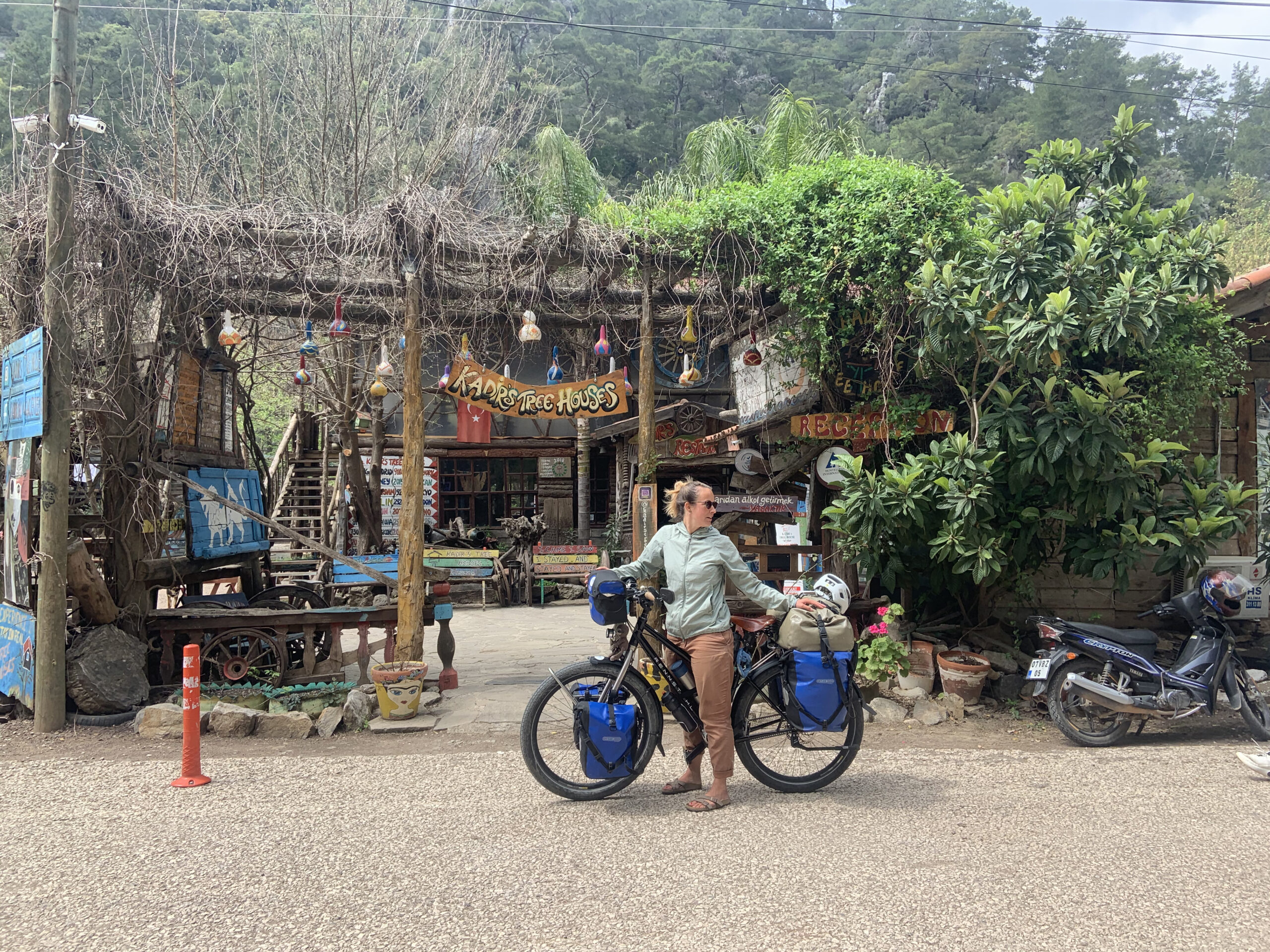
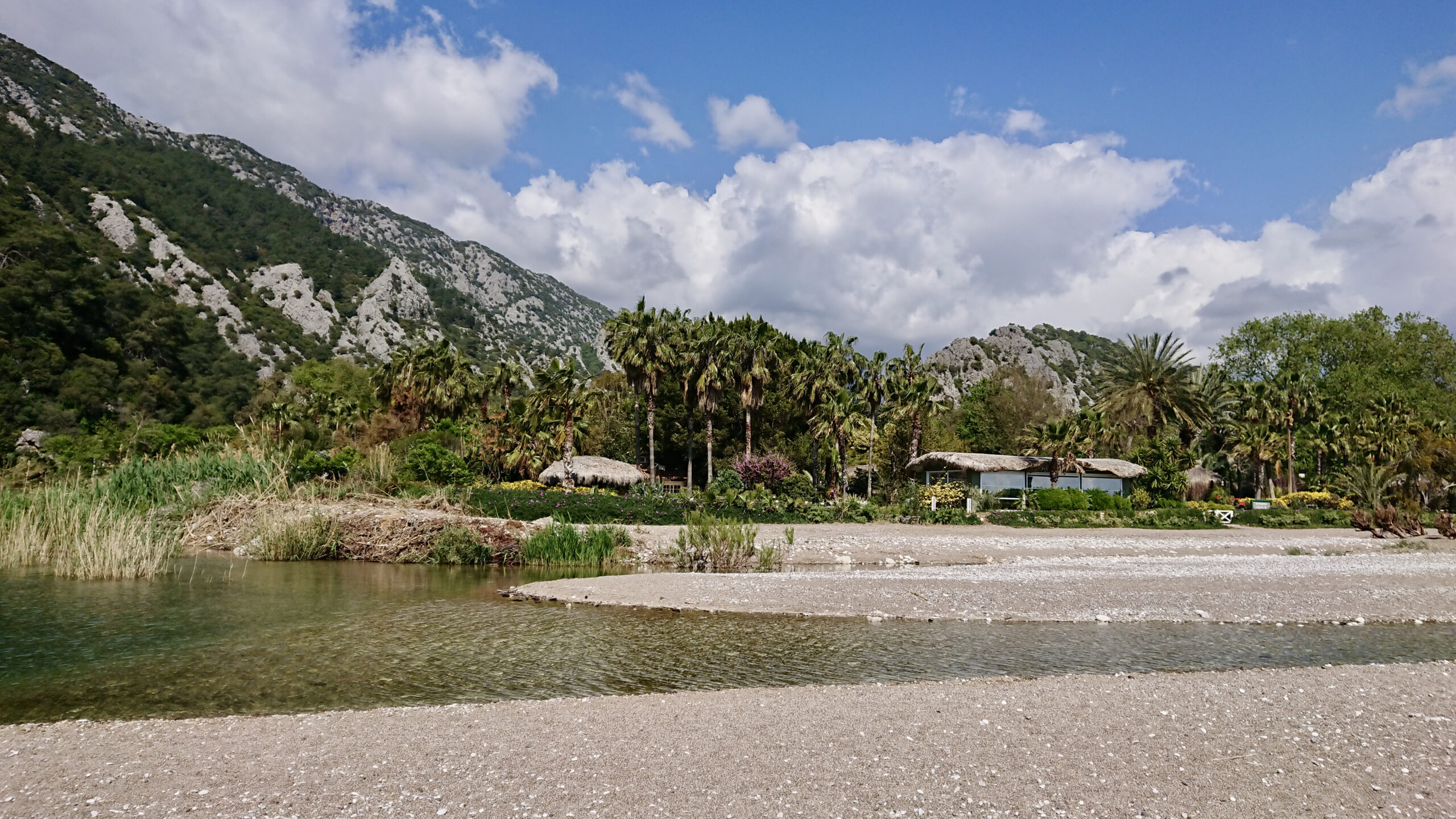
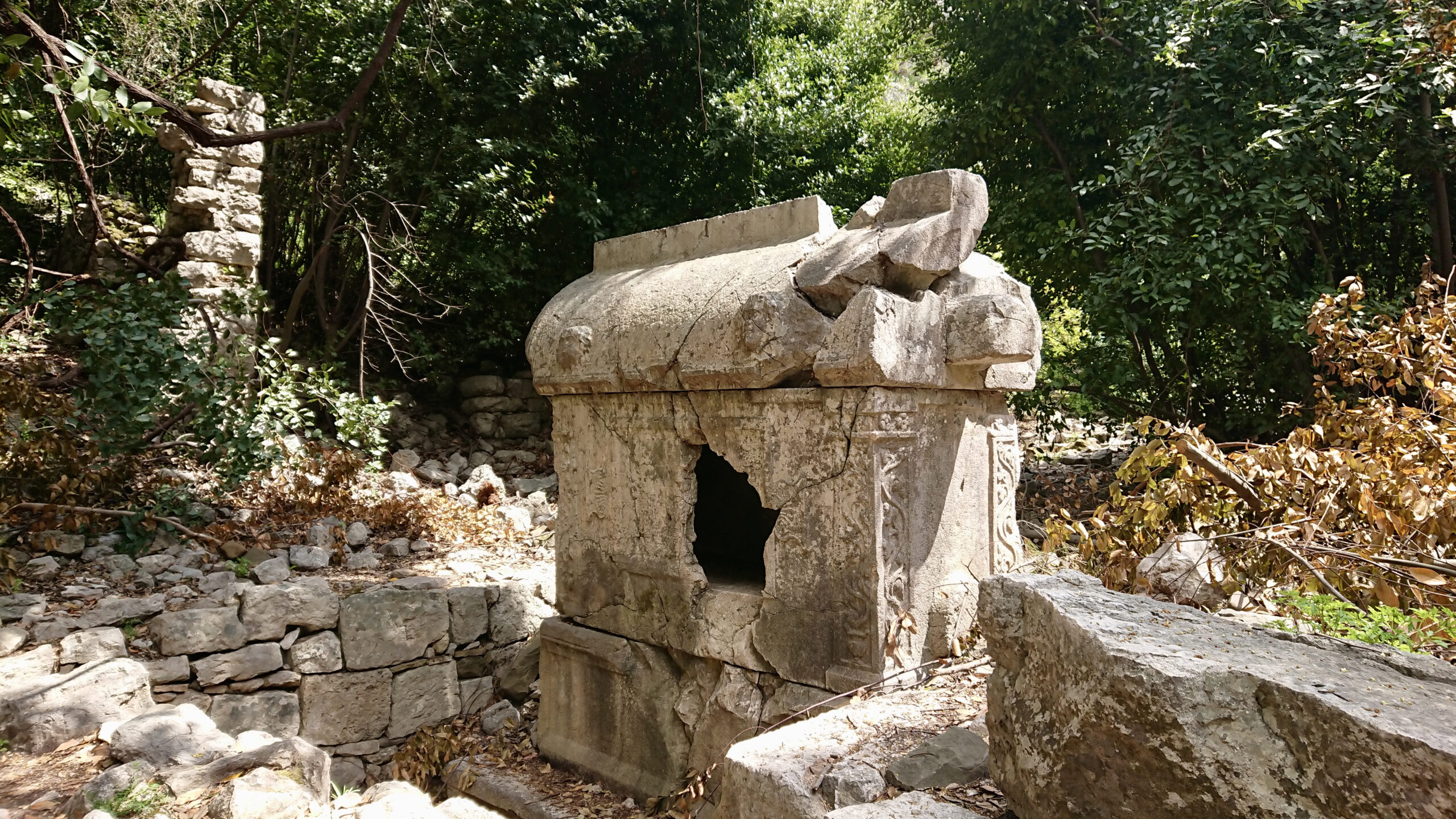
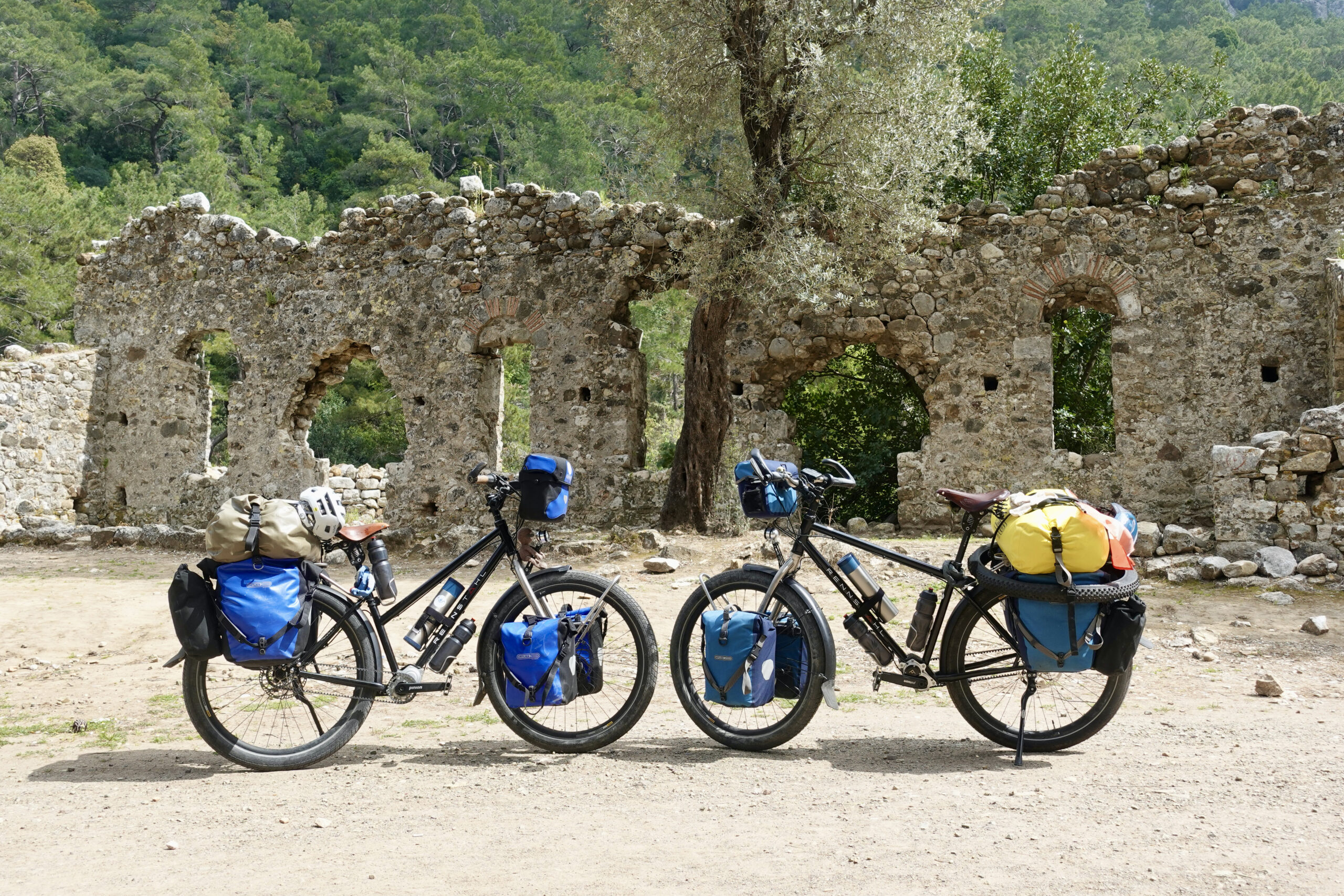
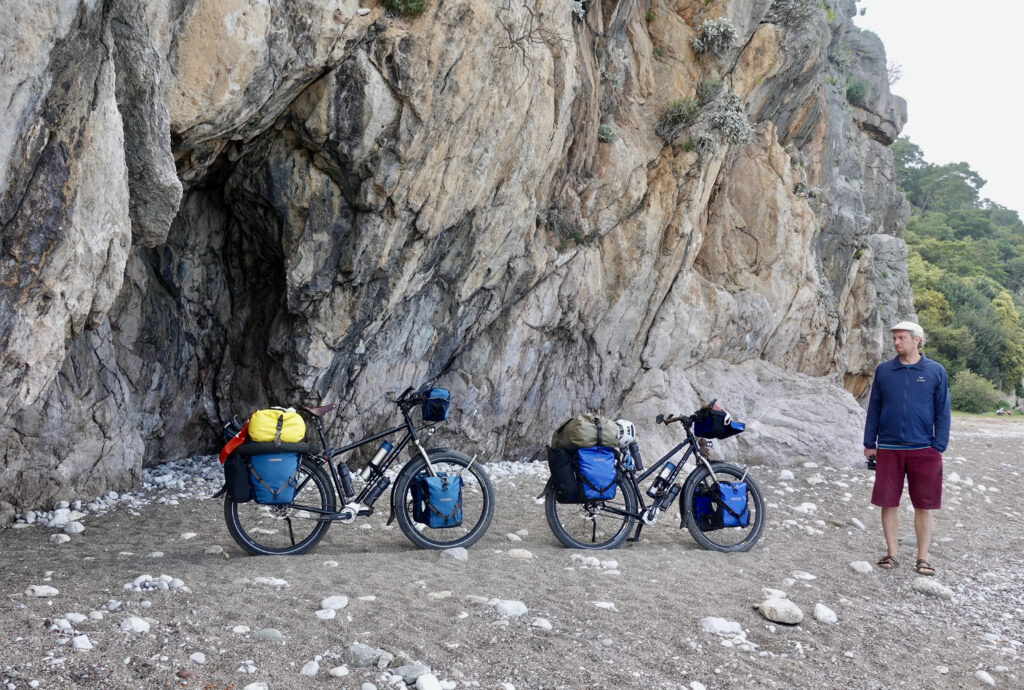
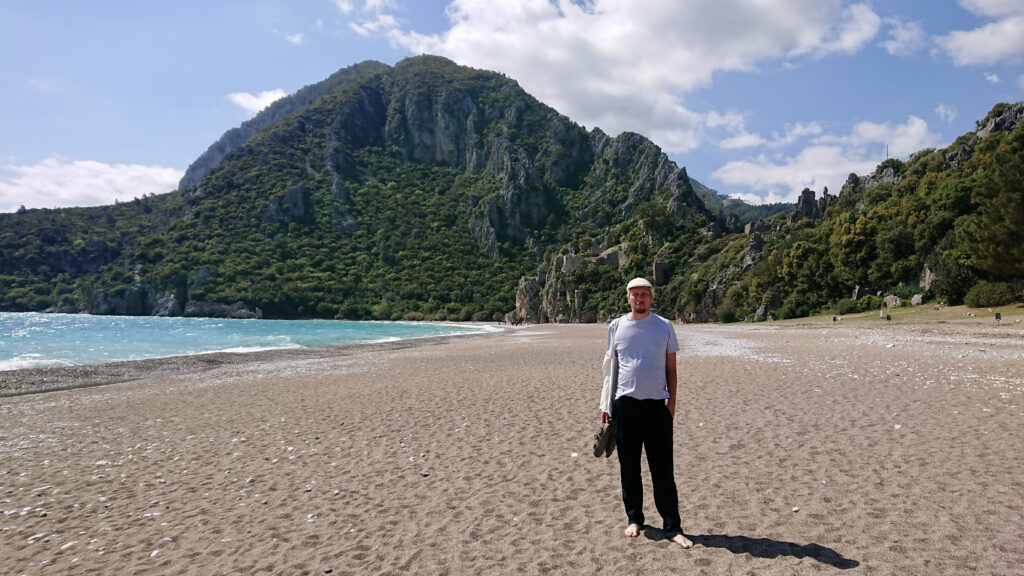
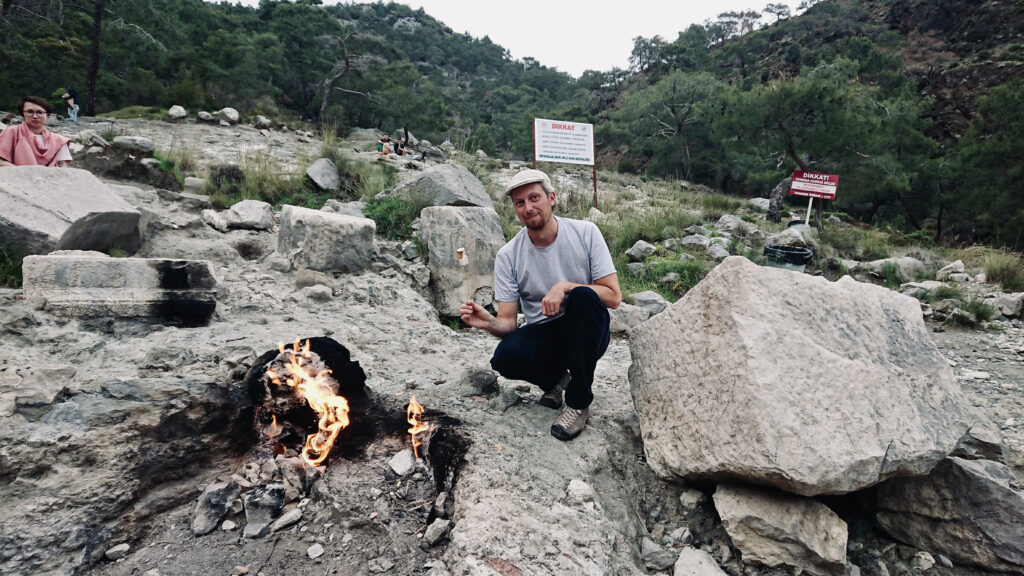




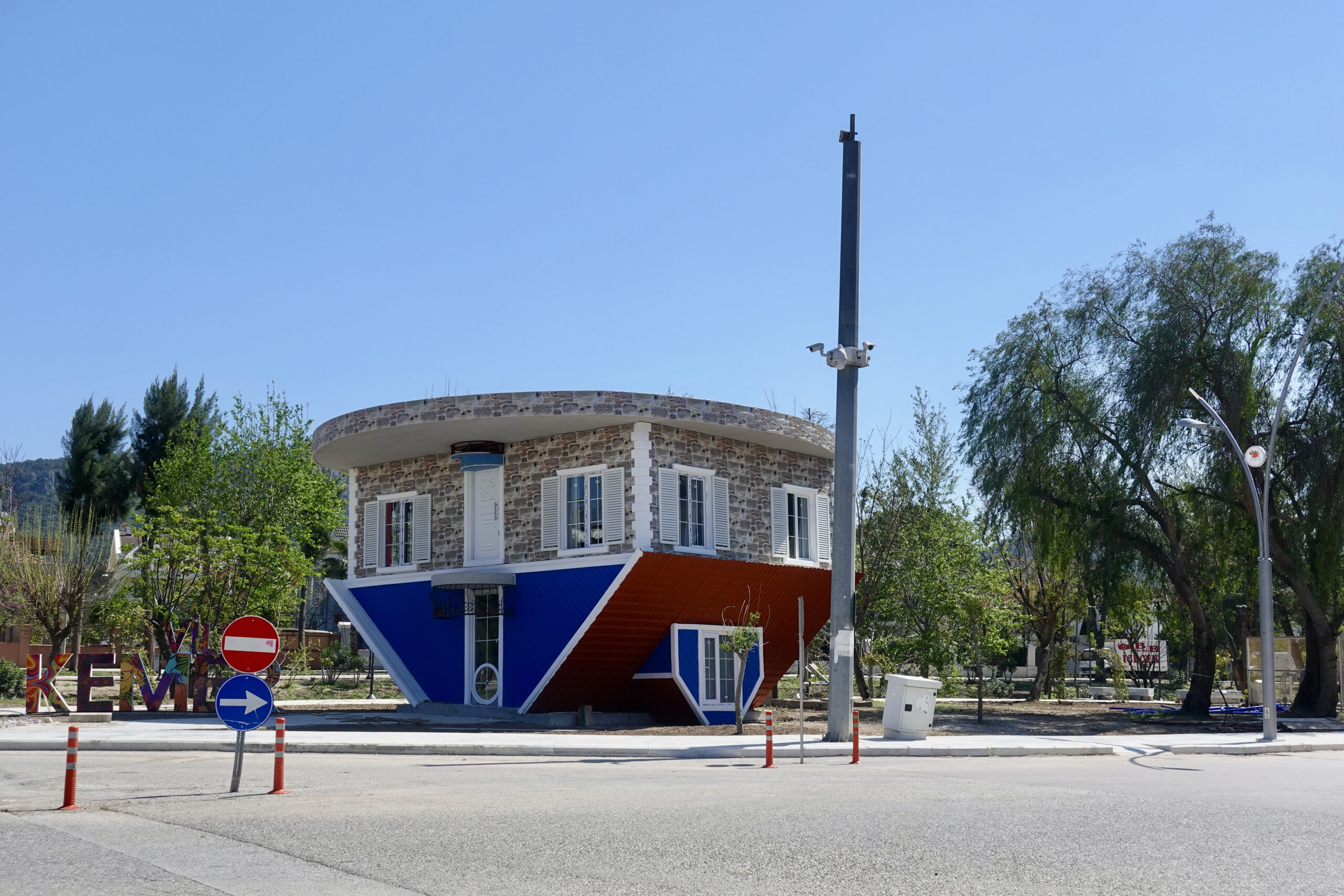
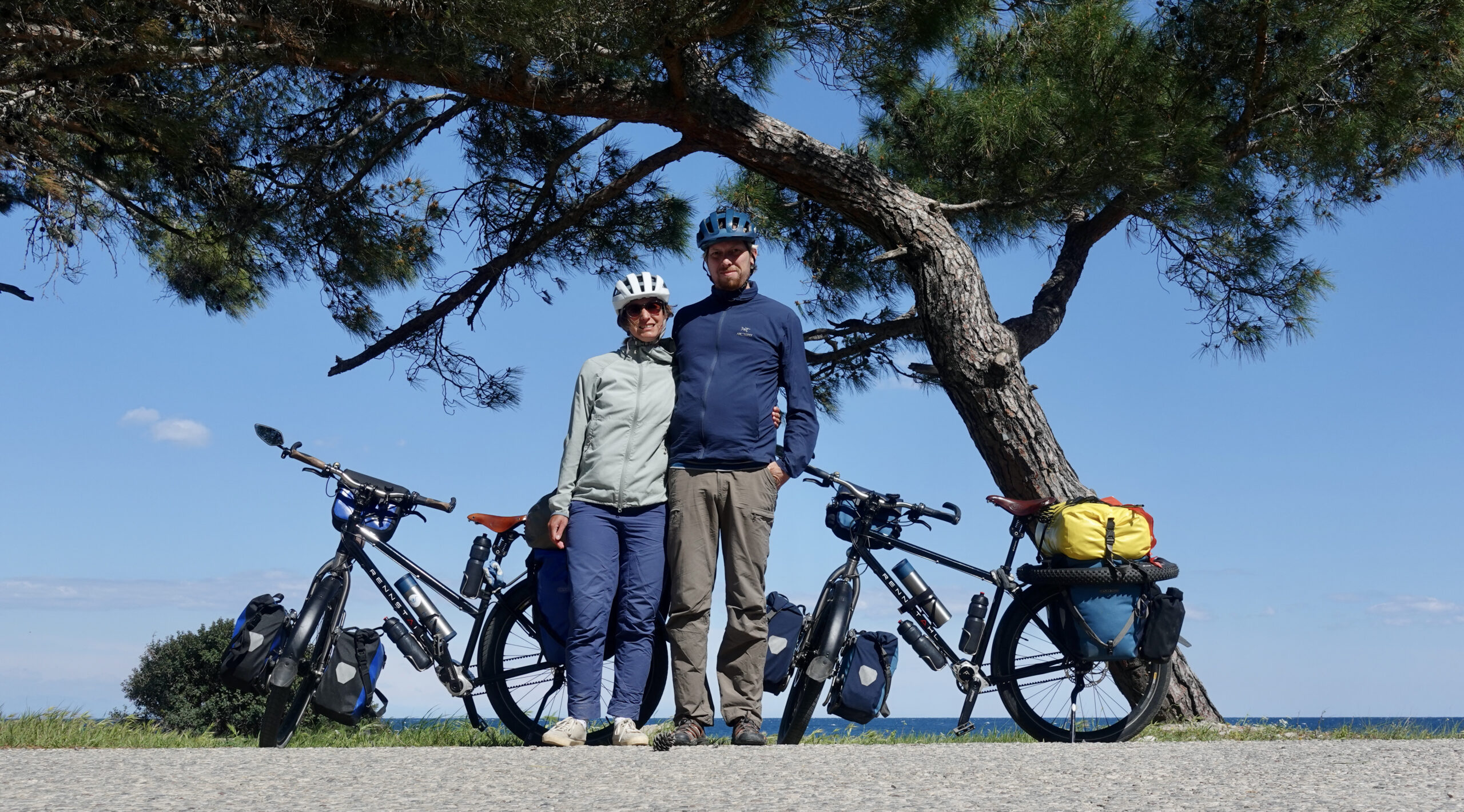
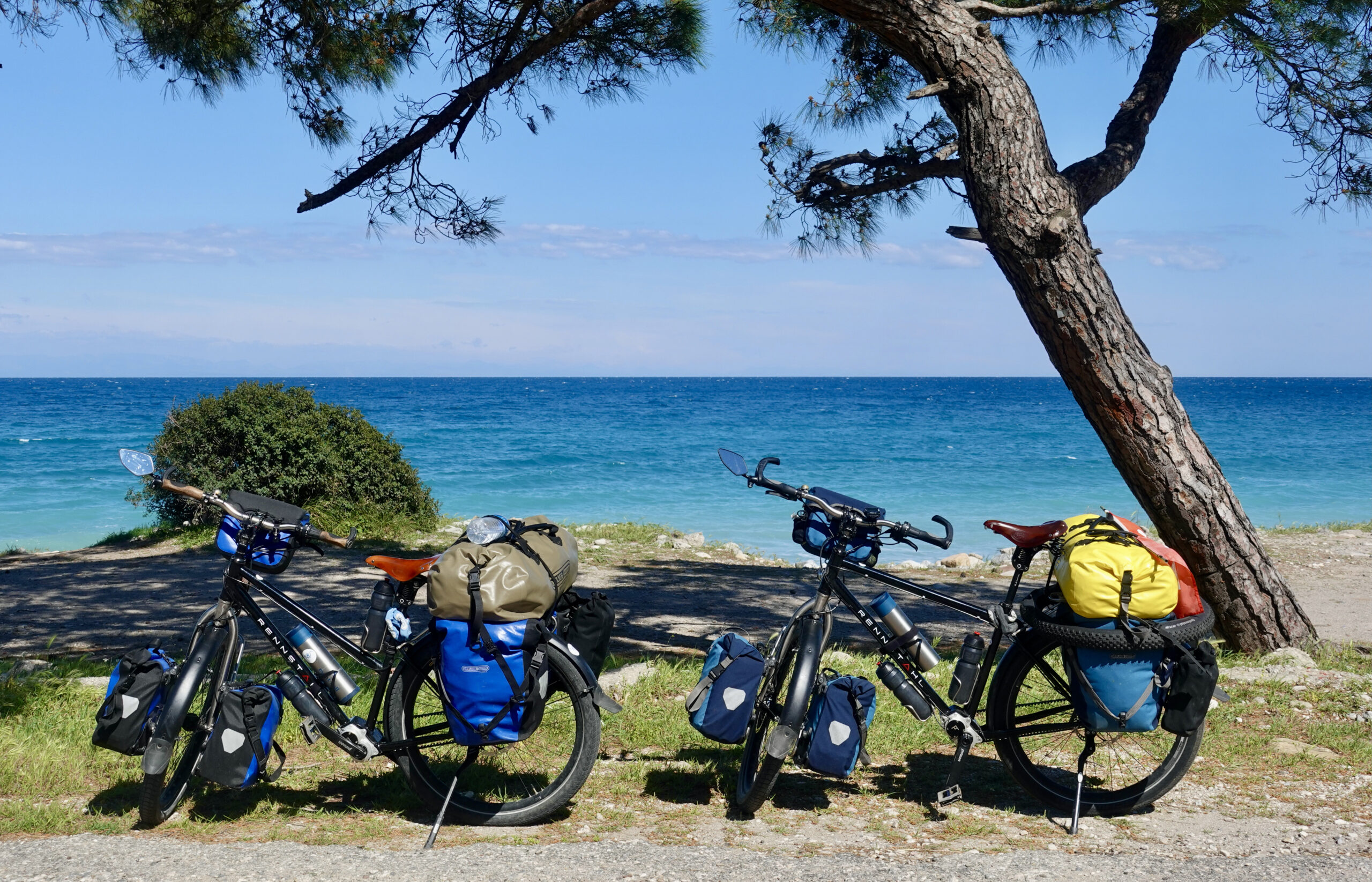

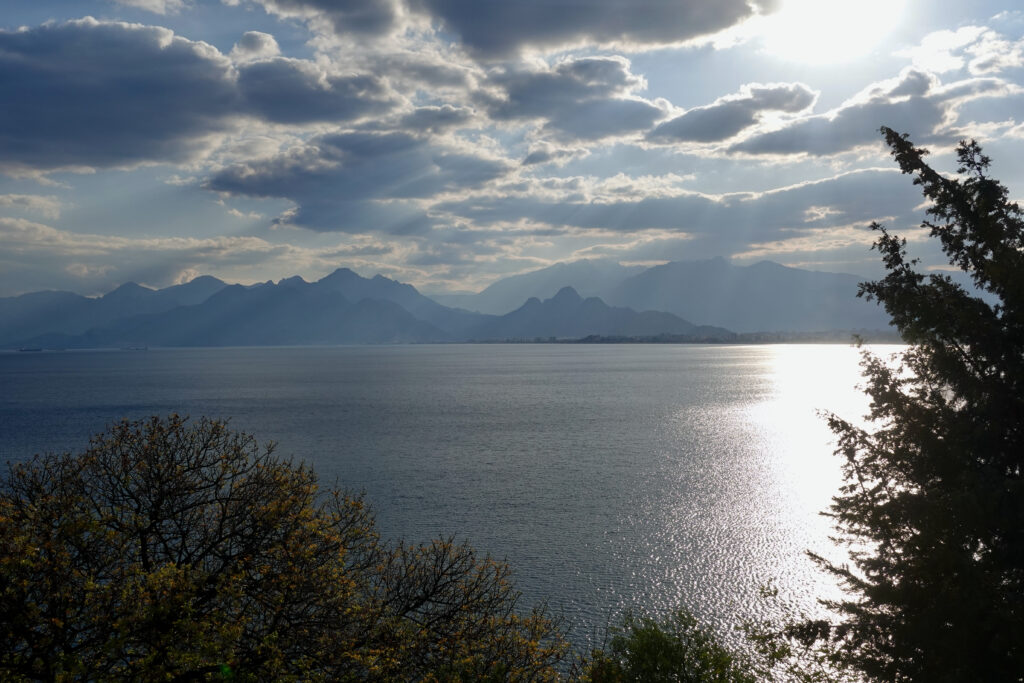
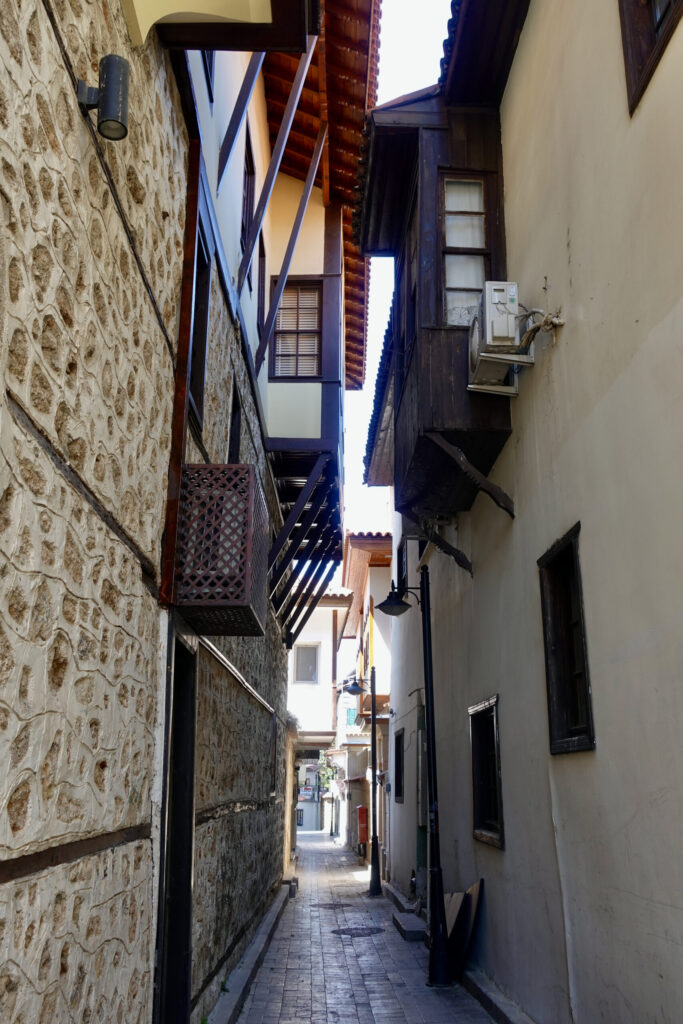

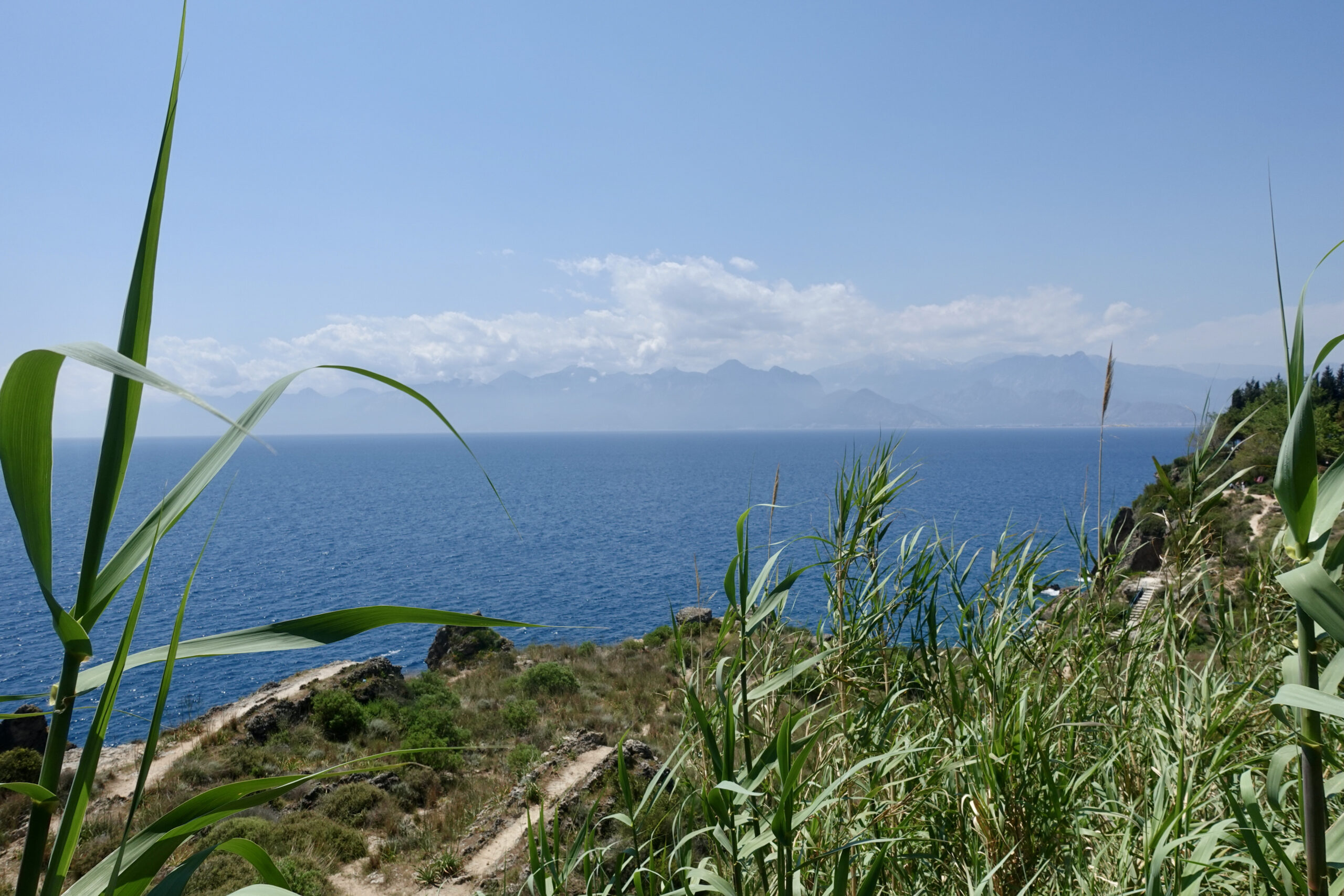
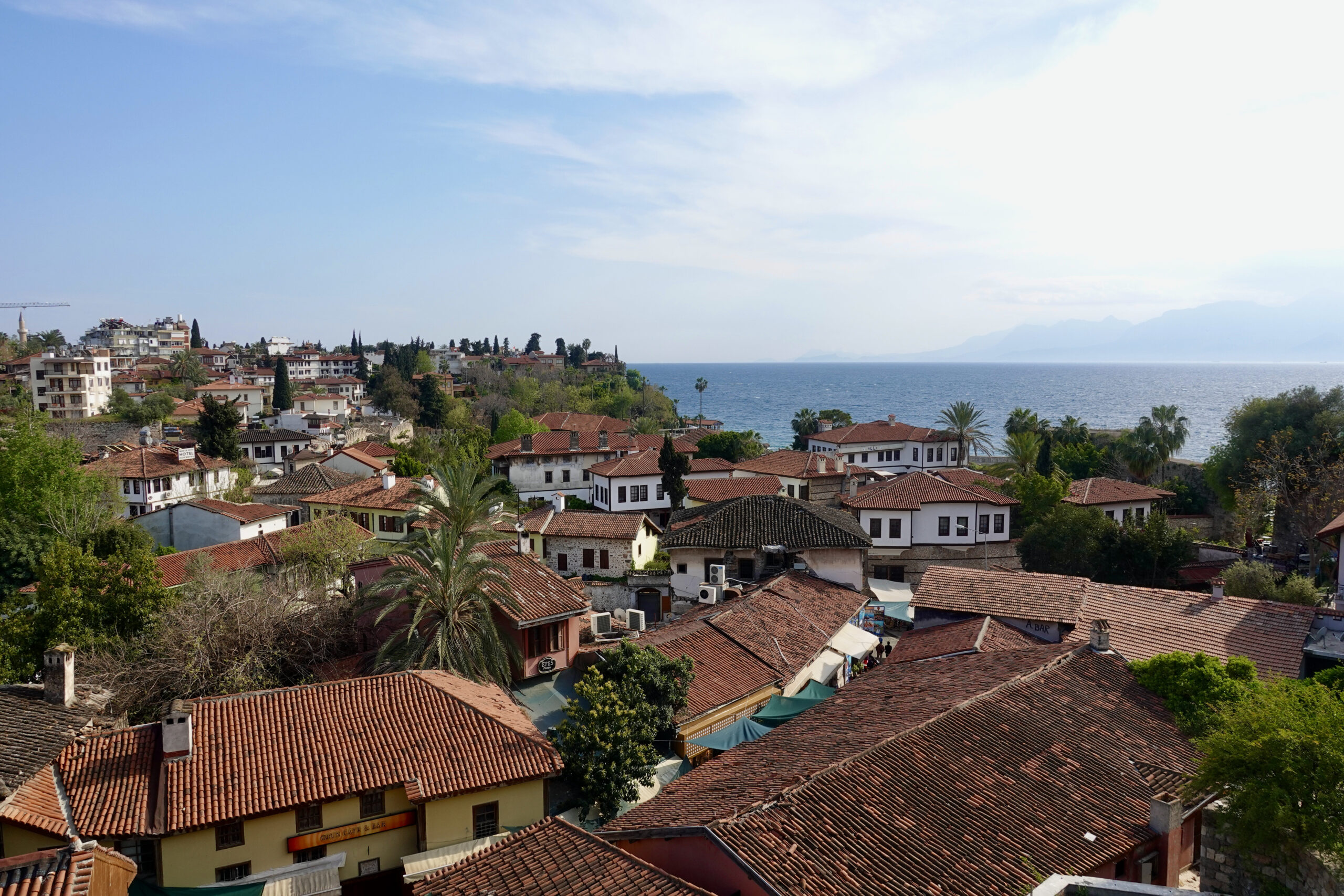


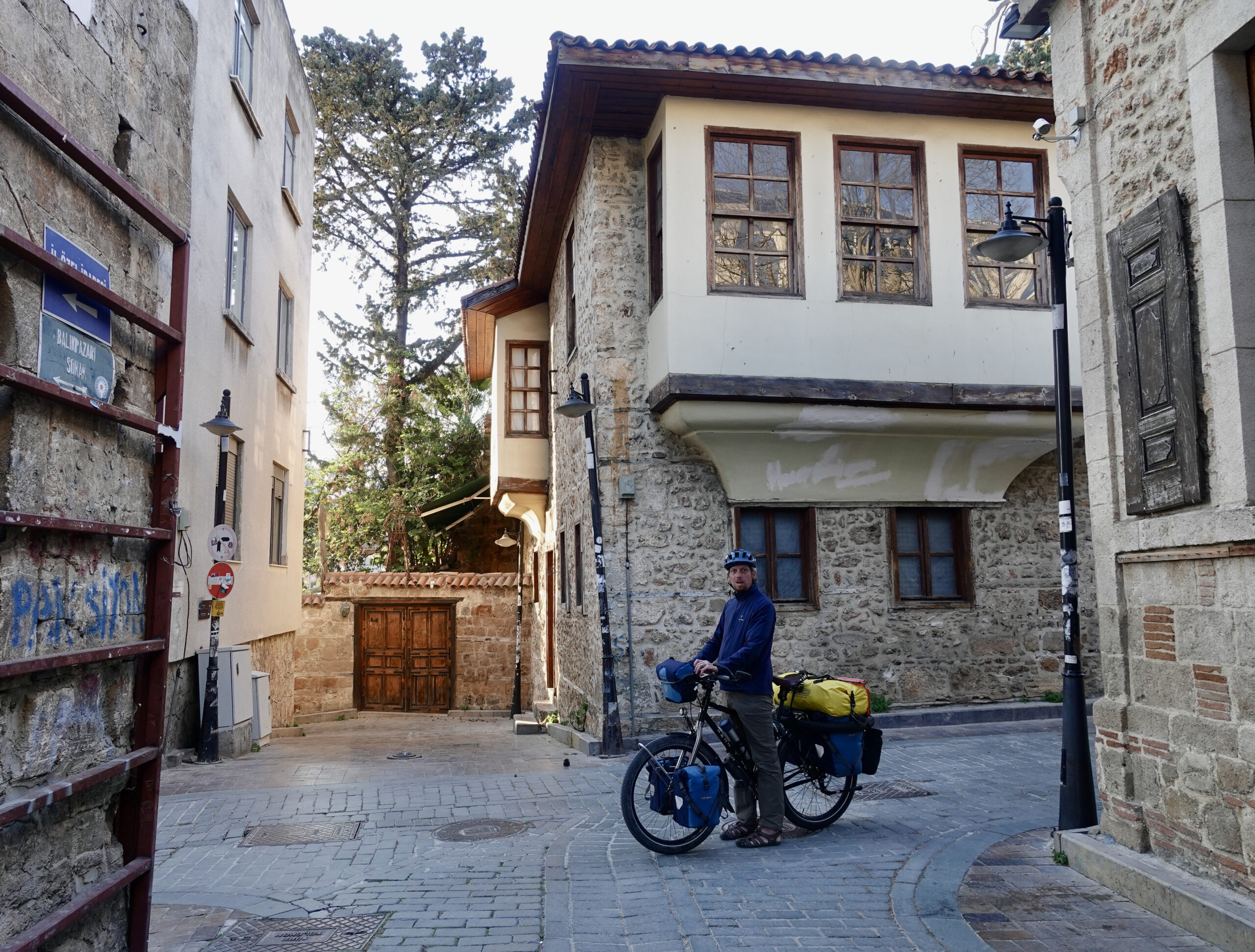
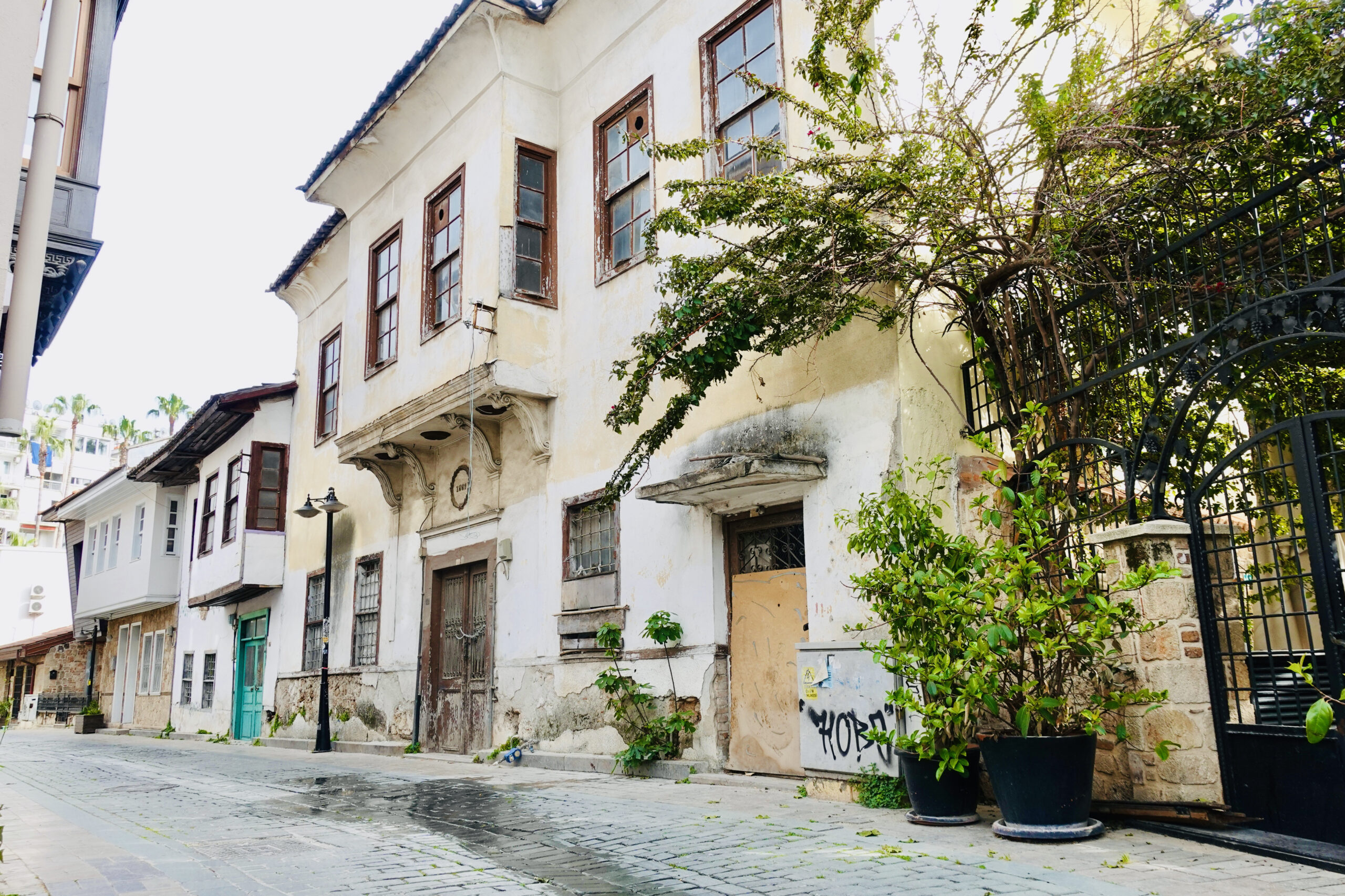

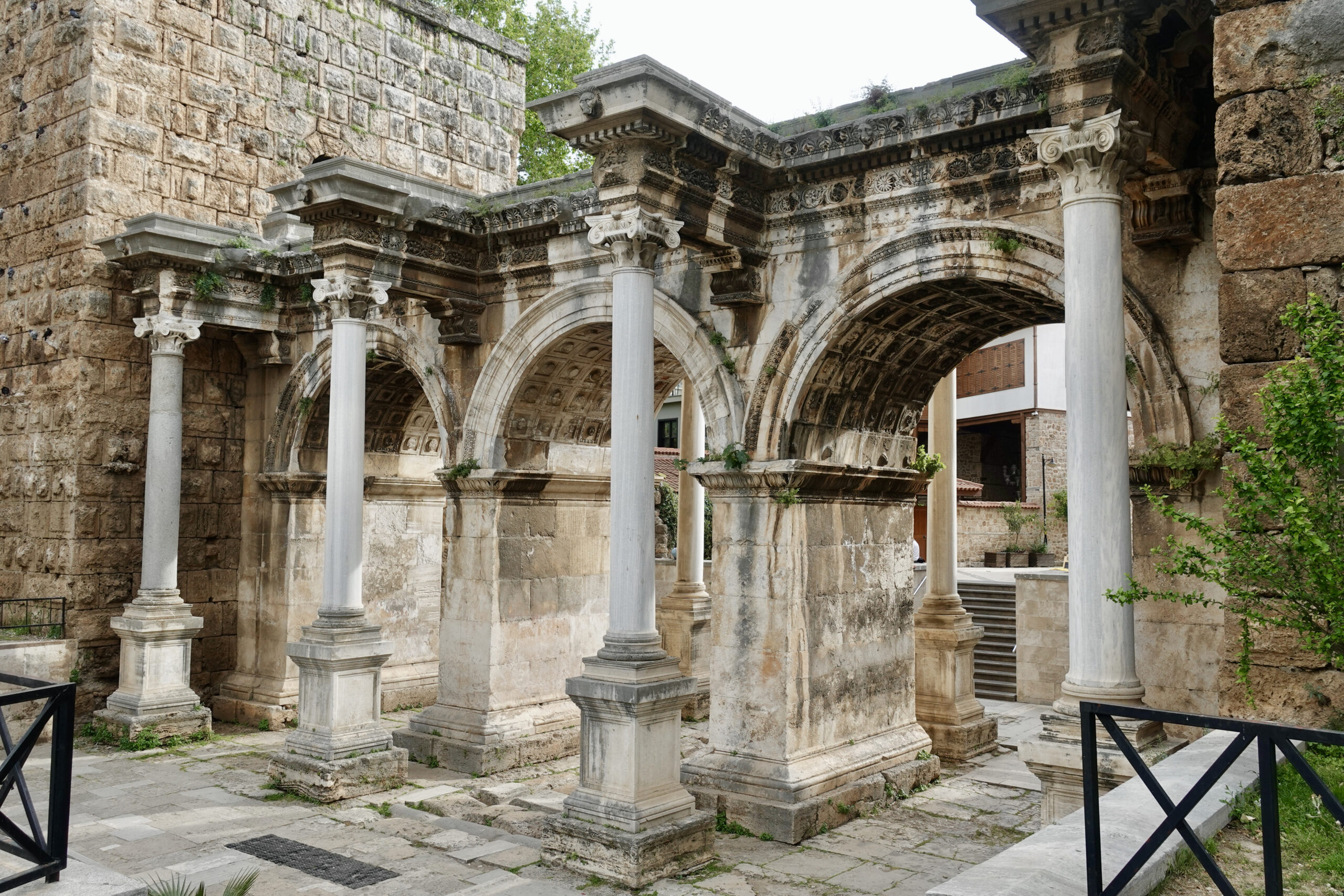
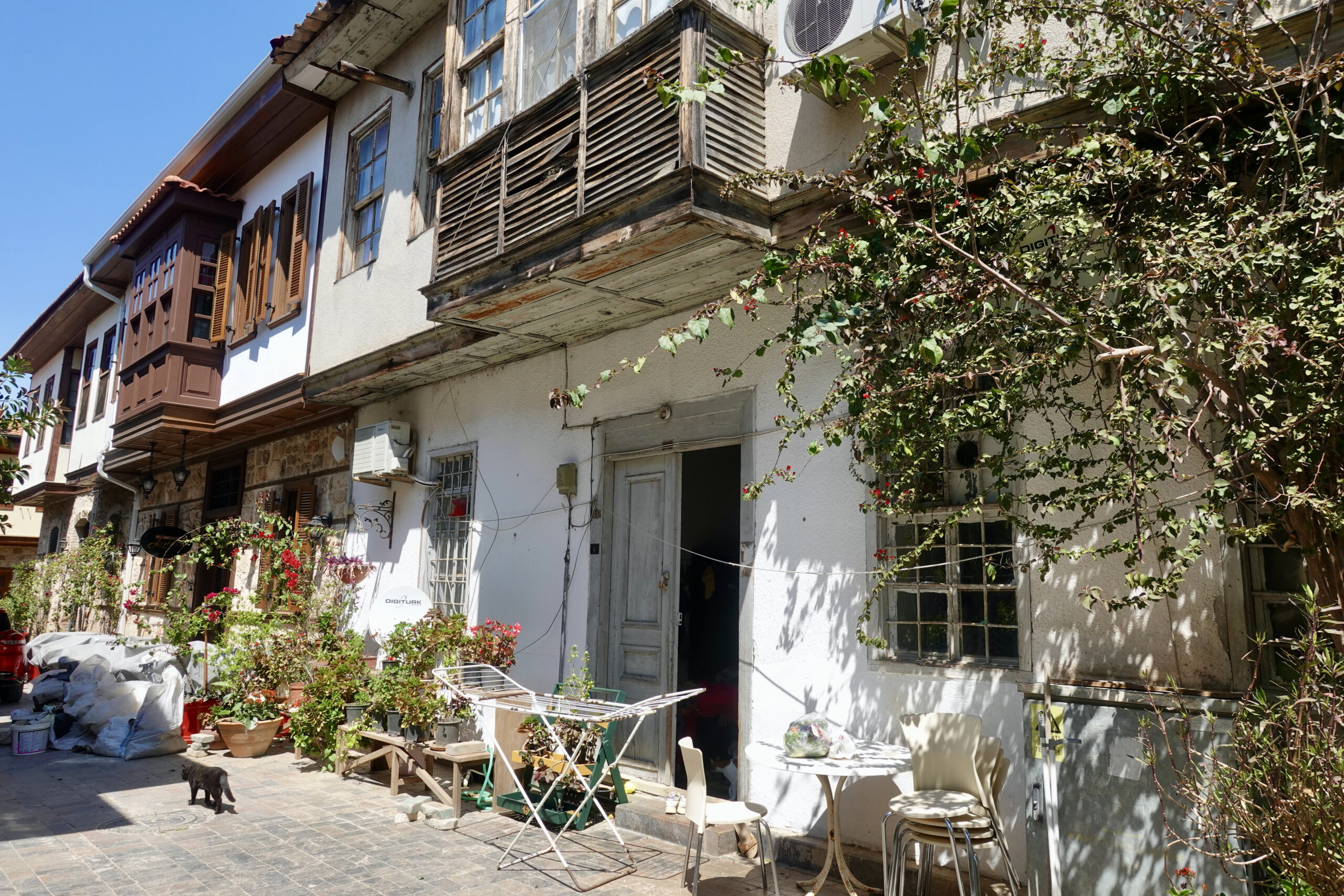
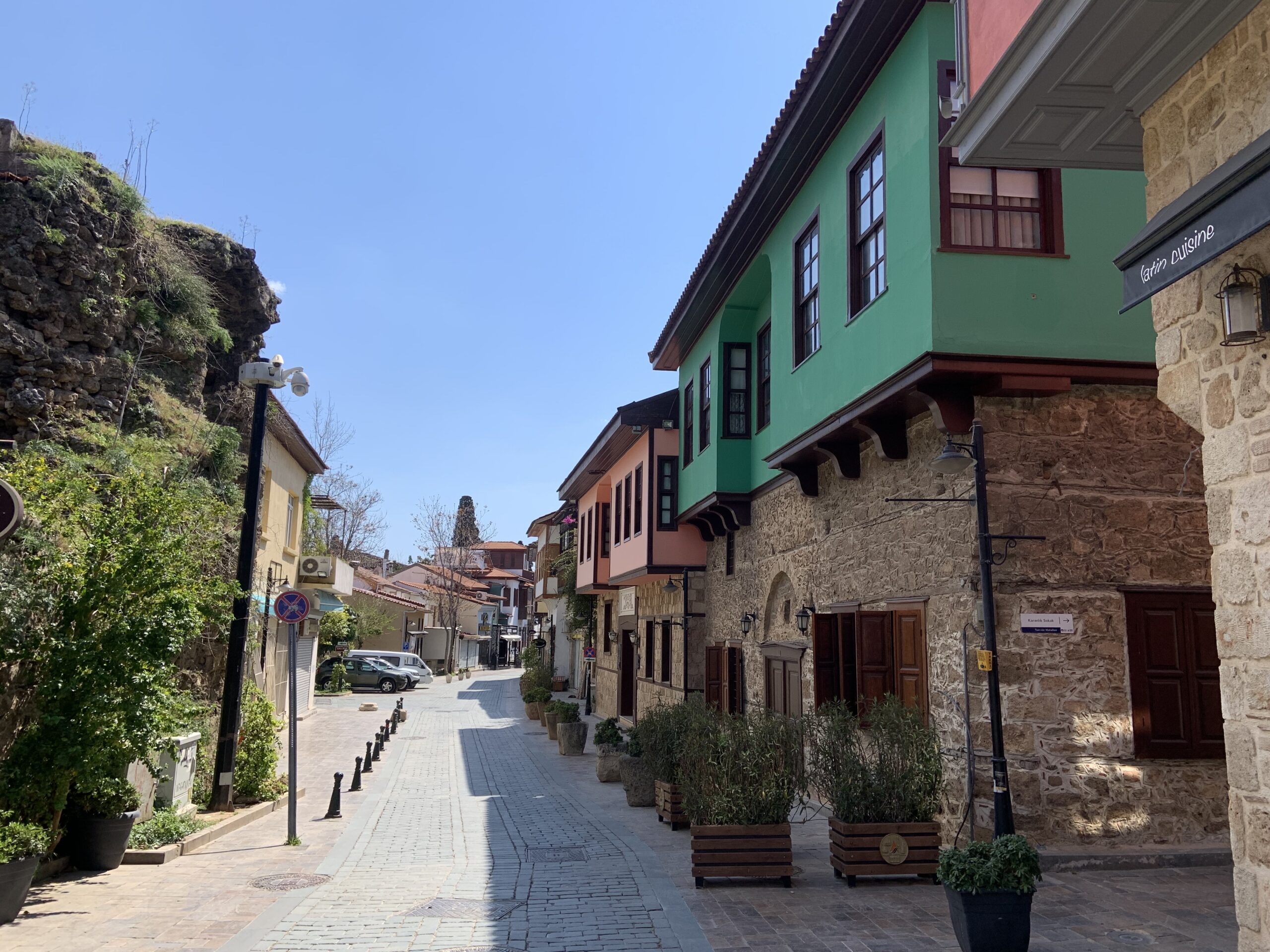
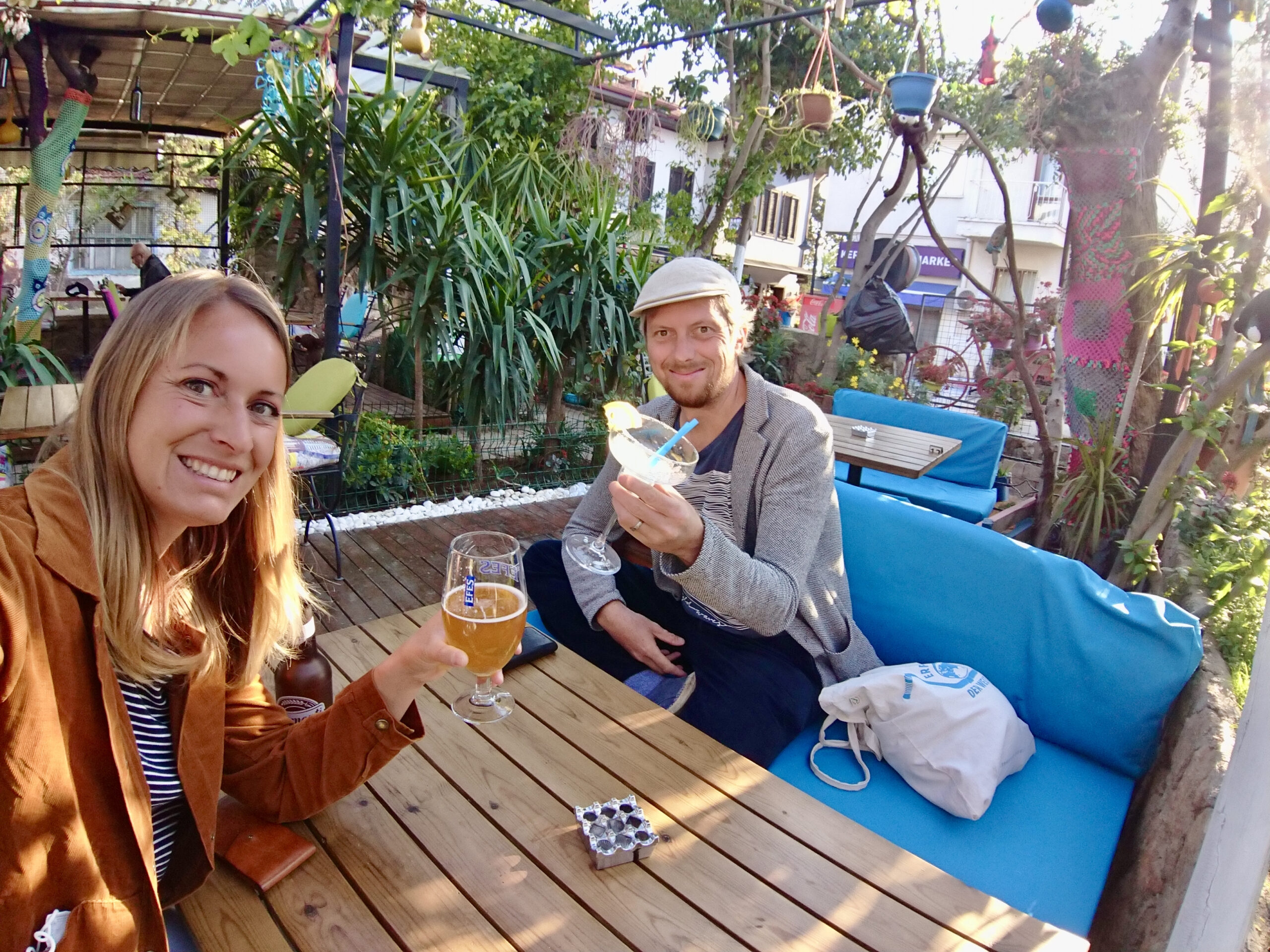
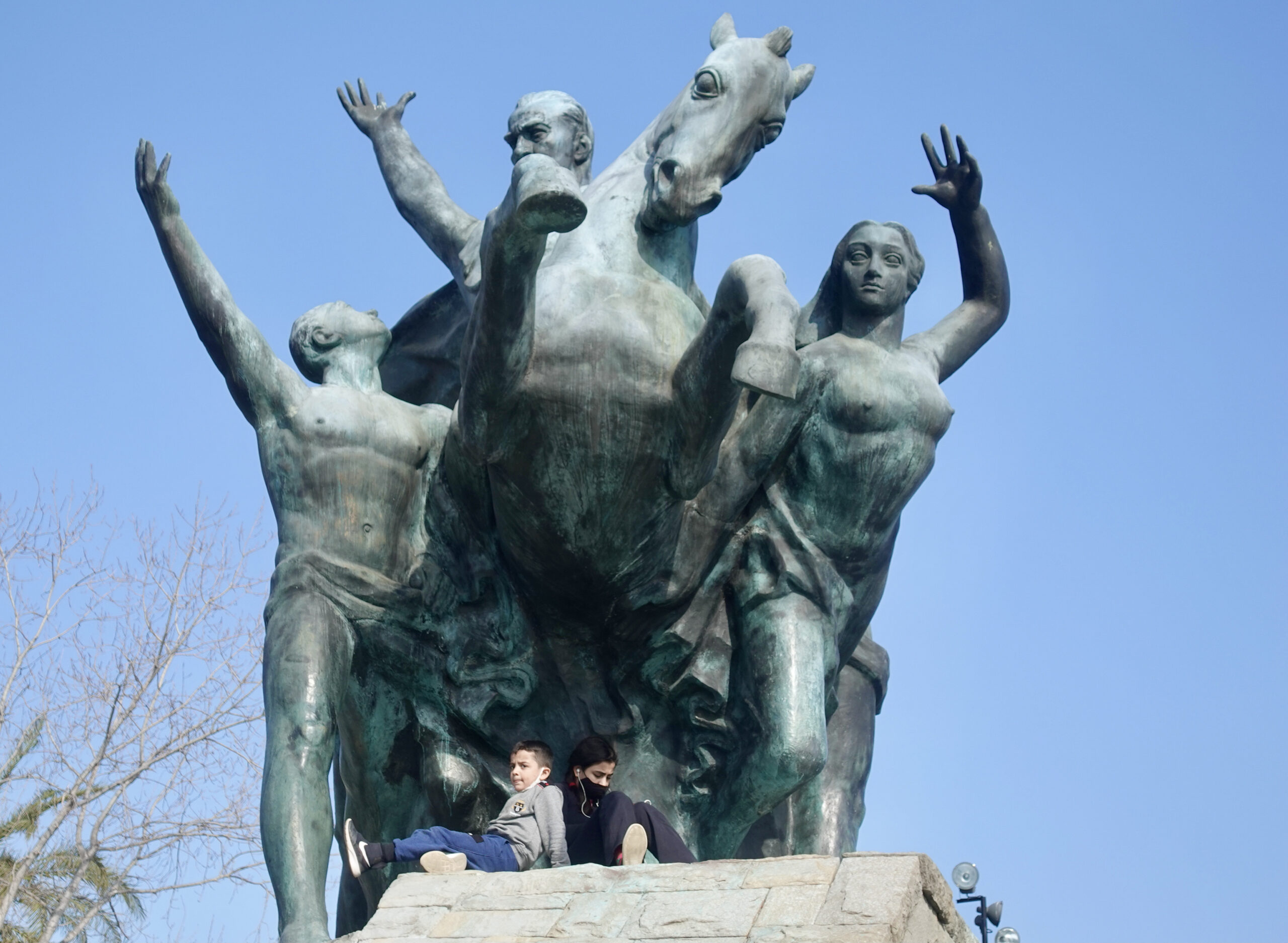
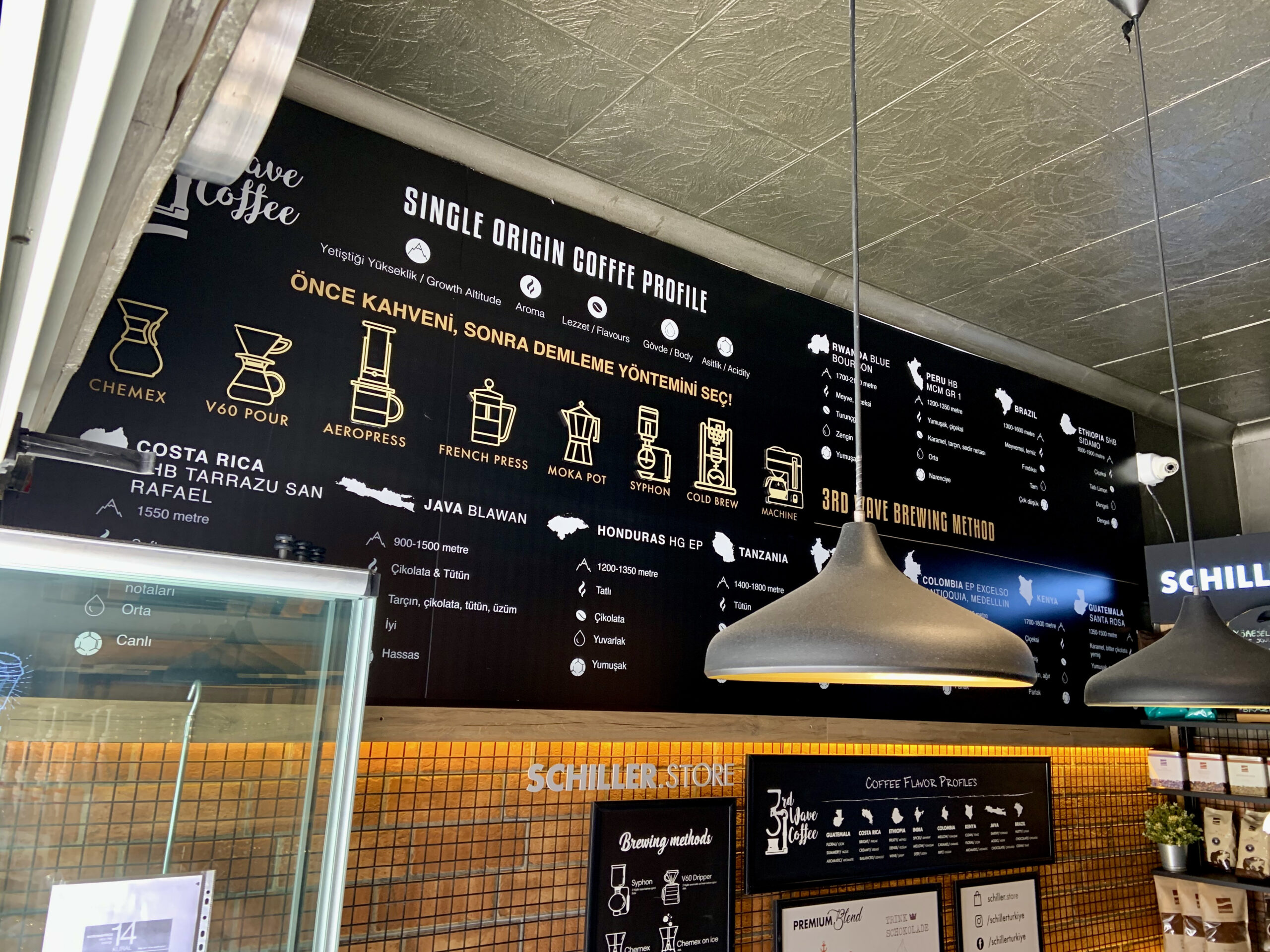
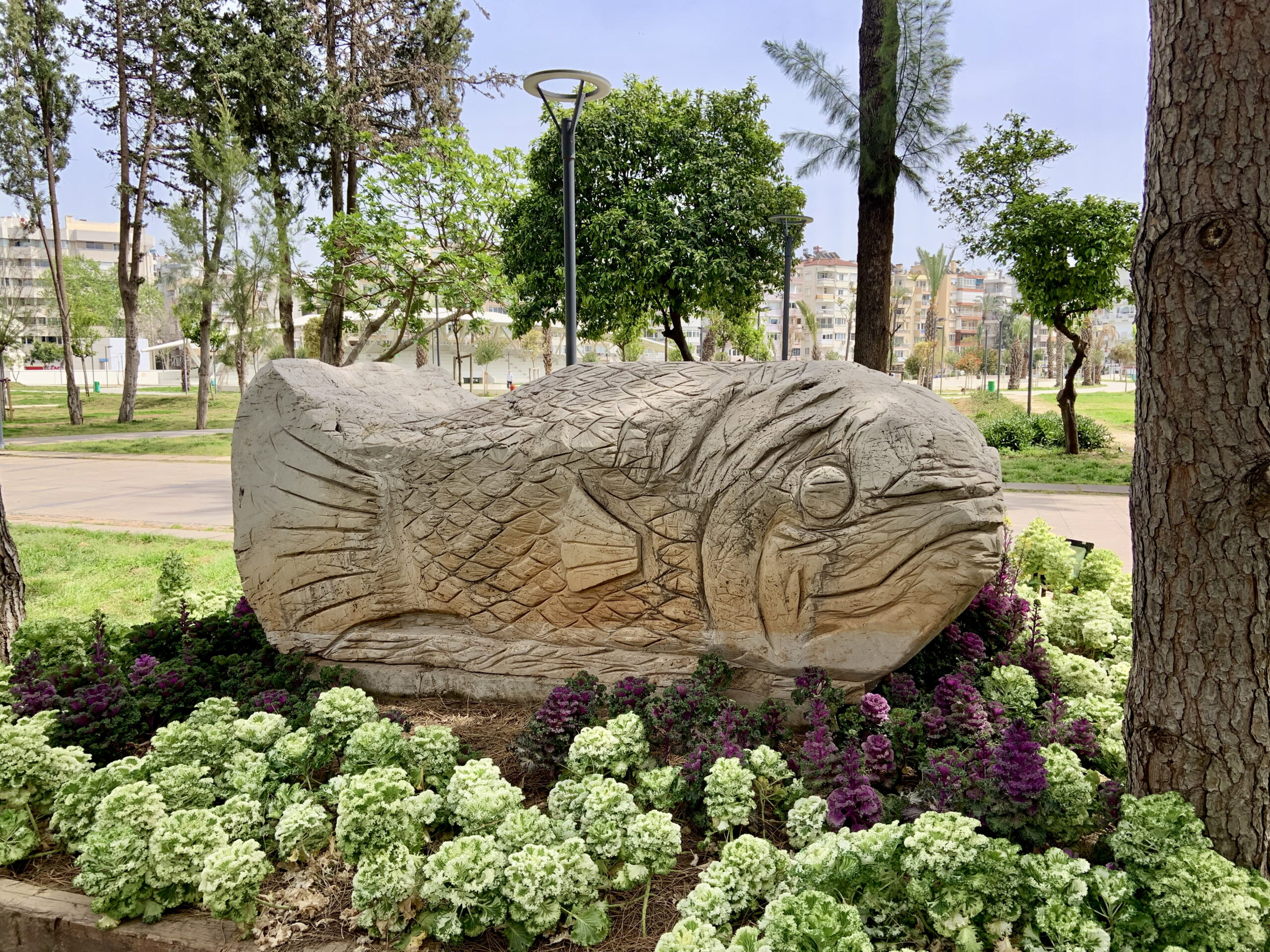
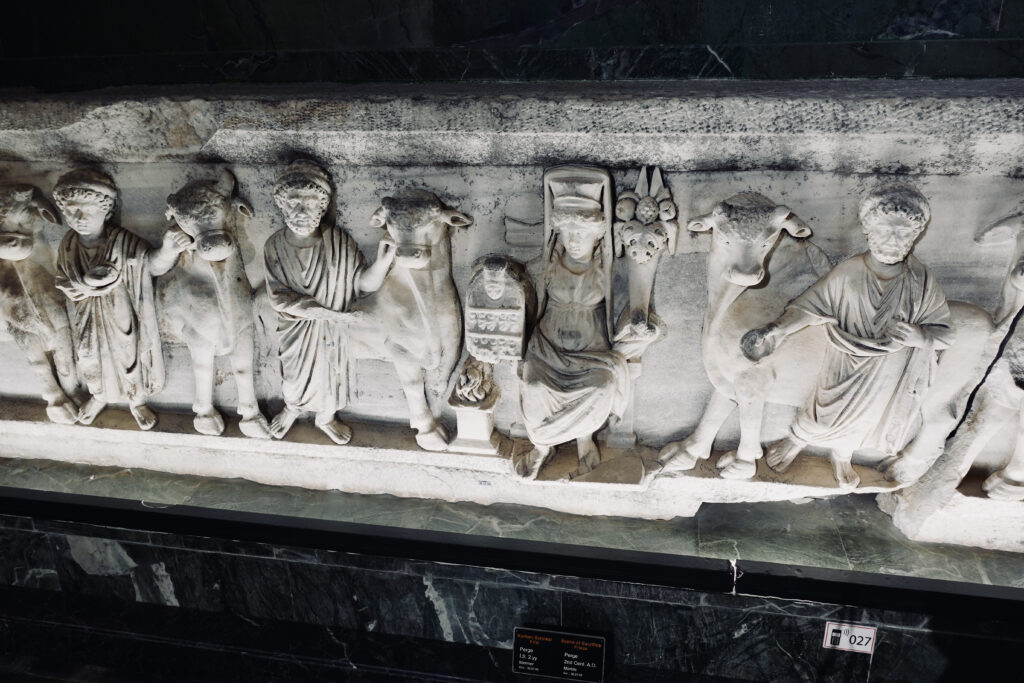
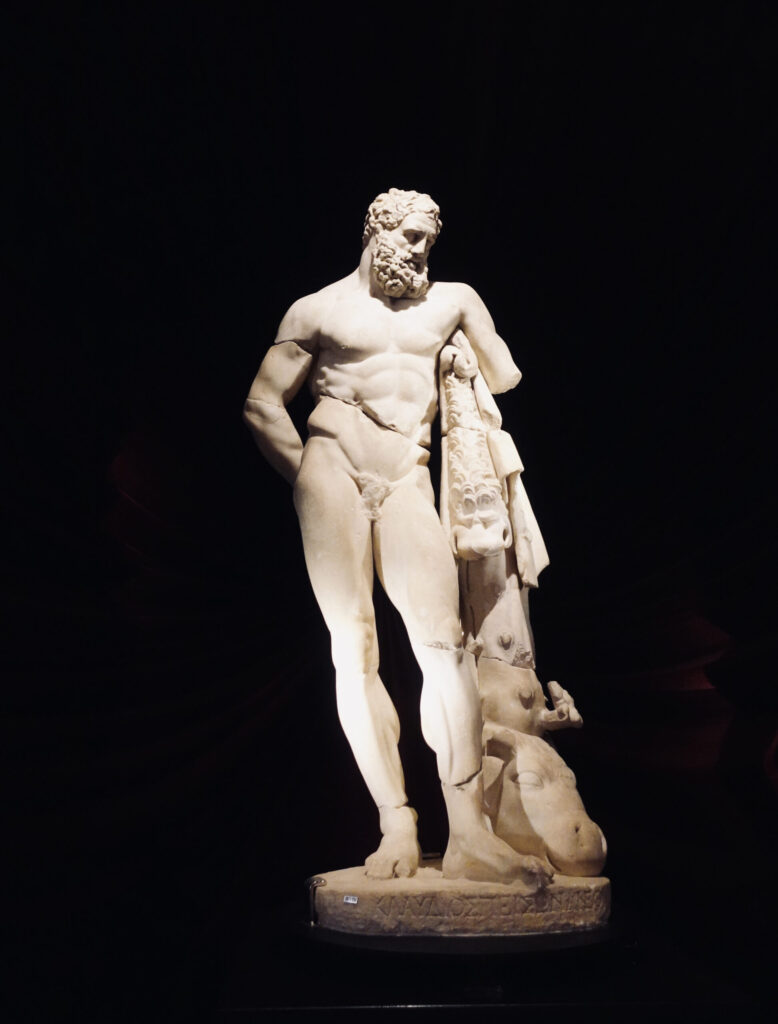
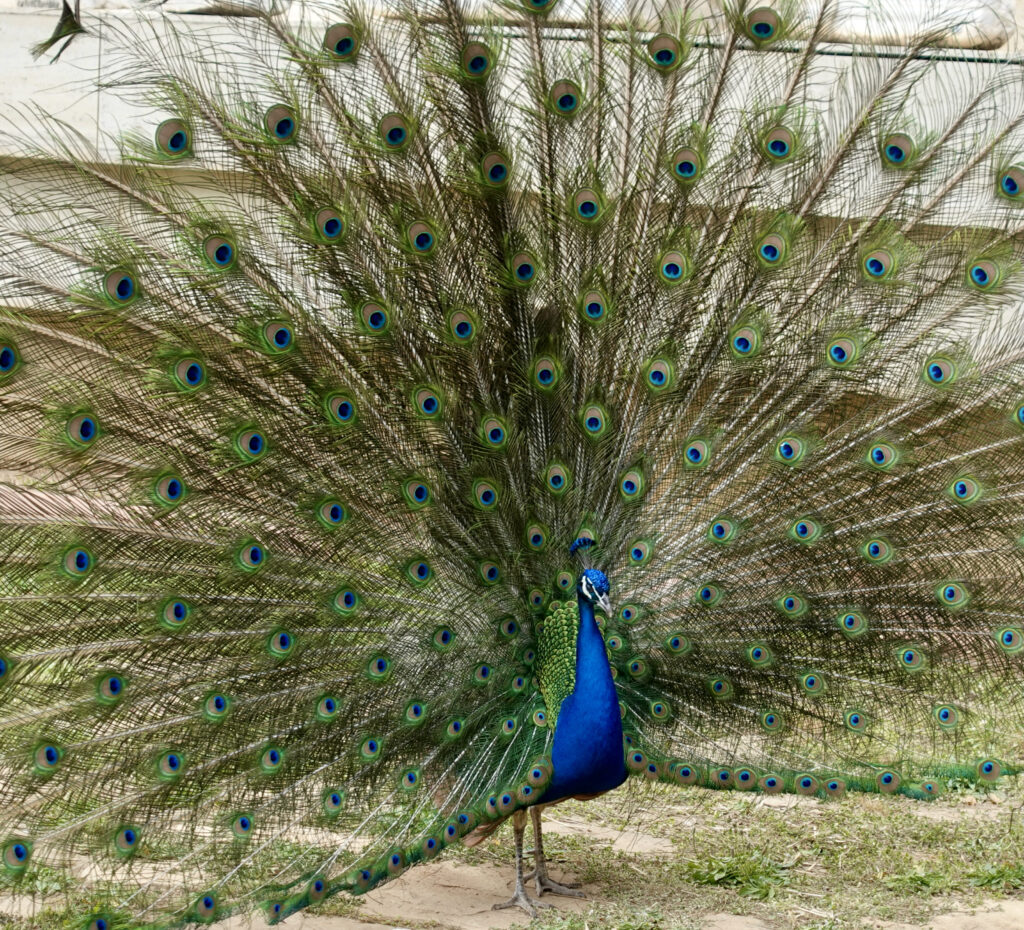

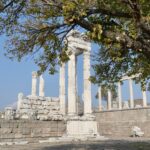
Leave a Reply